When you buy products via links on our website, we might receive an affiliate commission. Learn more
30 Plant Decor Ideas for Your Home
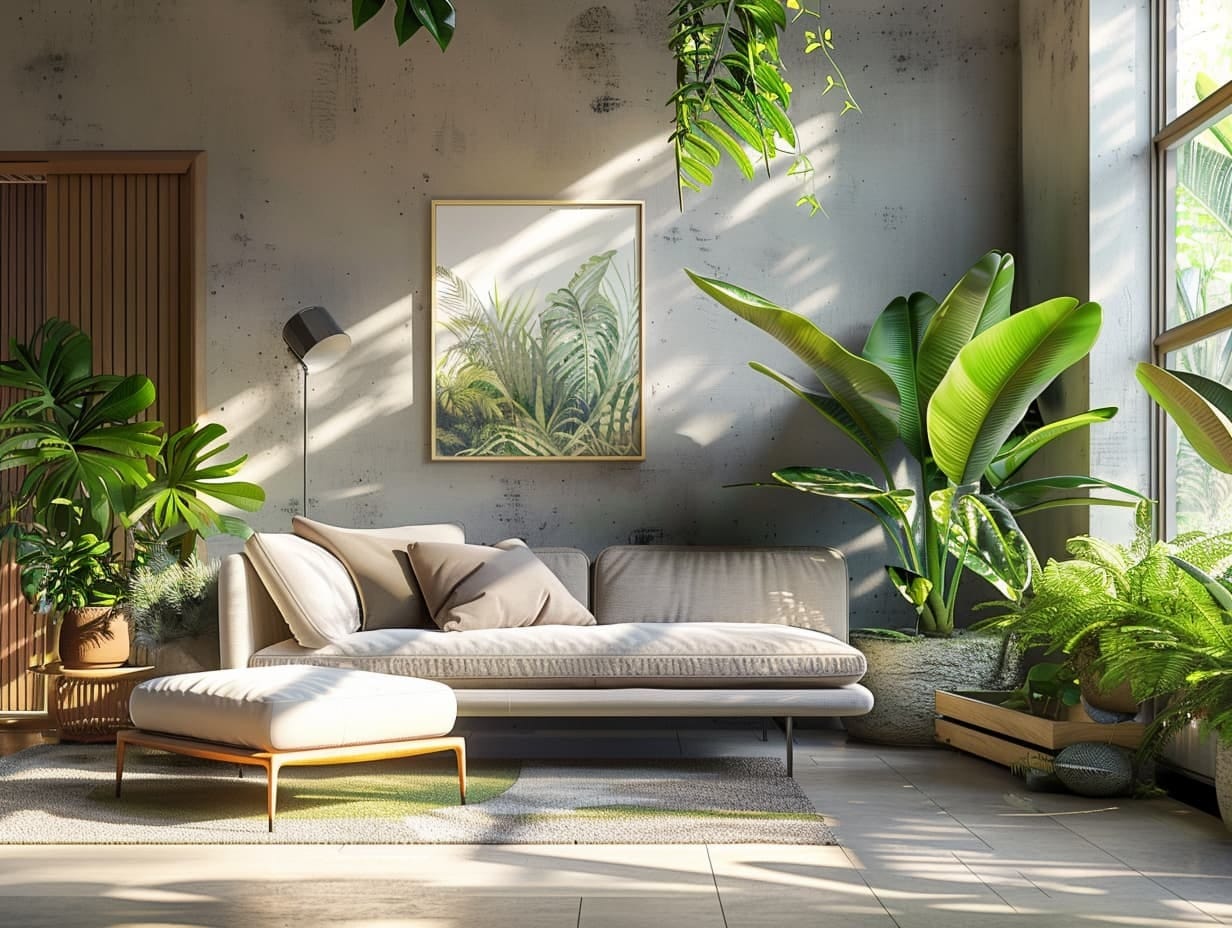
Transform your home into a vibrant oasis with our inspiring collection of 30 plant decor ideas. Whether you're an avid gardener or a novice looking to infuse a touch of nature into your living space, this guide offers creative and practical ways to incorporate greenery into every room.
From growing herbs on your kitchen windowsill to creating a lush vertical garden, these ideas not only beautify your environment but also enhance your well-being. Discover how to make dramatic statements with oversized planters, add tranquility with indoor water gardens, and even cultivate an edible garden indoors.
Embrace the joy and serenity that plants bring and turn your home into a green sanctuary.
Grow Herbs in Pots on Your Kitchen Window
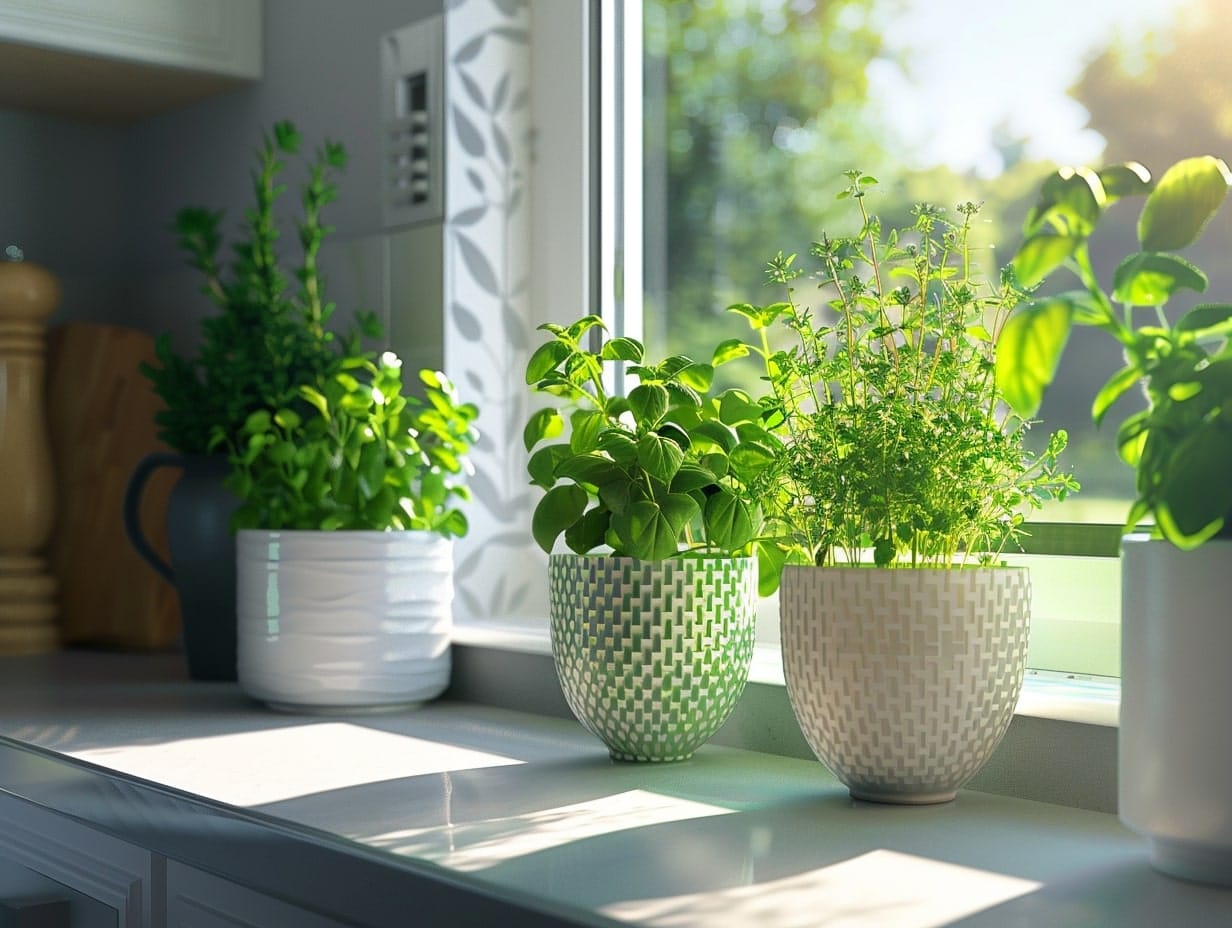
This setup takes advantage of natural light, crucial for plant growth, and keeps fresh herbs within arm's reach while you cook. Consider common culinary herbs like basil, mint, parsley, and thyme, which thrive in small containers and require similar care.
Ensure the pots have drainage holes to prevent waterlogging, which can lead to root rot. Use a variety of pot sizes and styles to add a decorative element while maintaining functionality.
Create a Green Wall With a Vertical Garden
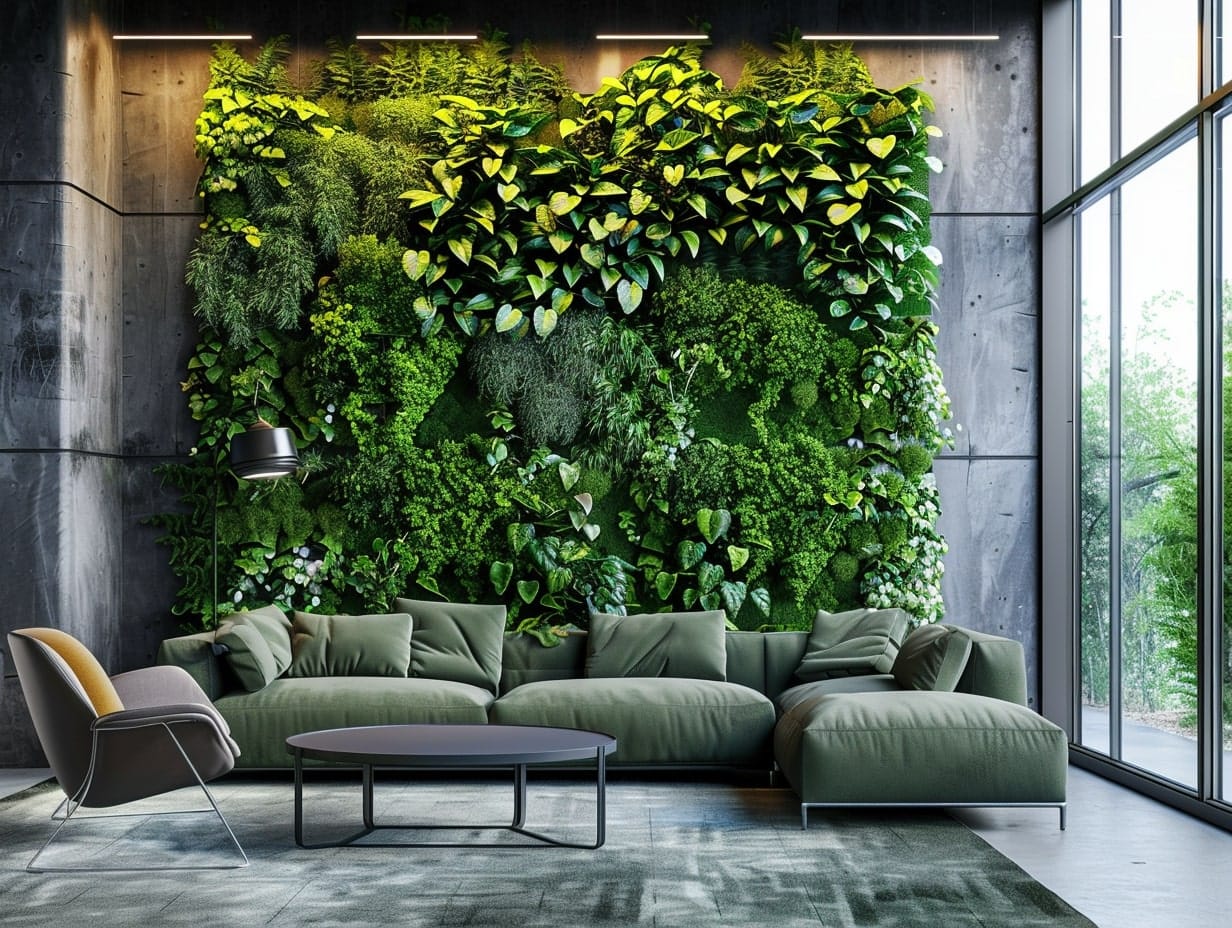
This space-saving solution is perfect for urban homes with limited ground space, allowing you to bring a substantial amount of greenery indoors.
Choose plants that have similar light and water needs, such as ferns, succulents, and ivies, which also differ in texture and color for visual interest. Ensure the wall gets adequate light, either natural or supplemented with grow lights.
Place Large Potted Plants in the Corners to Fill Space
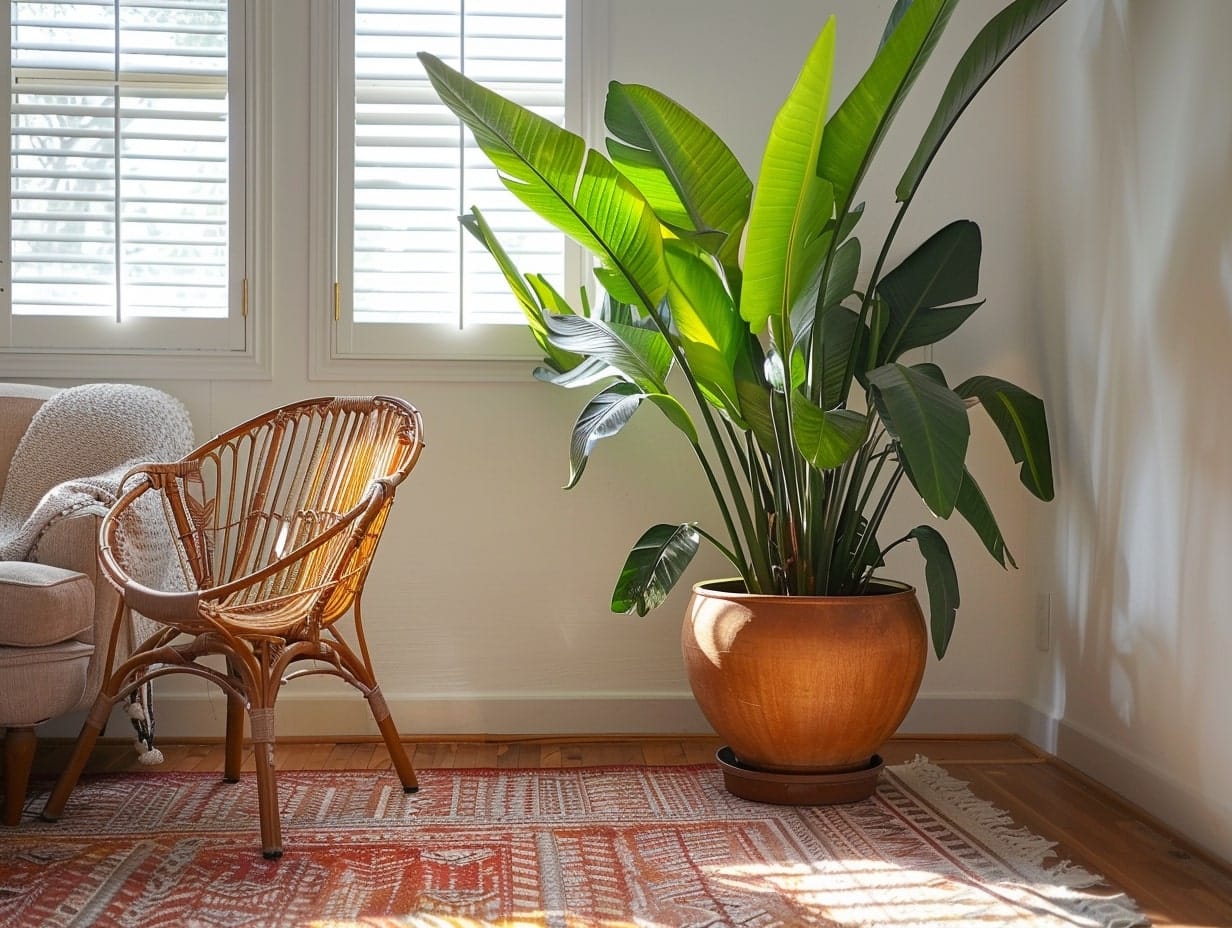
Placing large potted plants in the corners of rooms is an excellent way to utilize often-underused space and add a dynamic vertical element to your home decor.
Large plants like fiddle leaf figs, rubber plants, or palms can make a striking statement and help soften the hard angles of a room, creating a more inviting and cozy atmosphere.
When selecting pots, consider the interior design of your home. Select pots that complement or contrast with your decor, such as sleek modern ceramics or rustic wicker. Ensure these plants have enough room to grow without crowding the space.
Display a Collection of Bonsais on Floating Shelves

Bonsai, the Japanese art of growing miniature trees, is highly regarded for its disciplined beauty and the tranquility it can bring into a home. When arranging bonsai on floating shelves, consider the placement of each tree to ensure it receives adequate light, which is crucial for their health and growth.
Arrange the floating shelves in a staggered pattern to create visual interest and allow each bonsai to stand out. Choose shelves that complement the style of the bonsai pots, whether they are traditional clay or modern ceramic.
Design a Bookshelf Filled With Plants
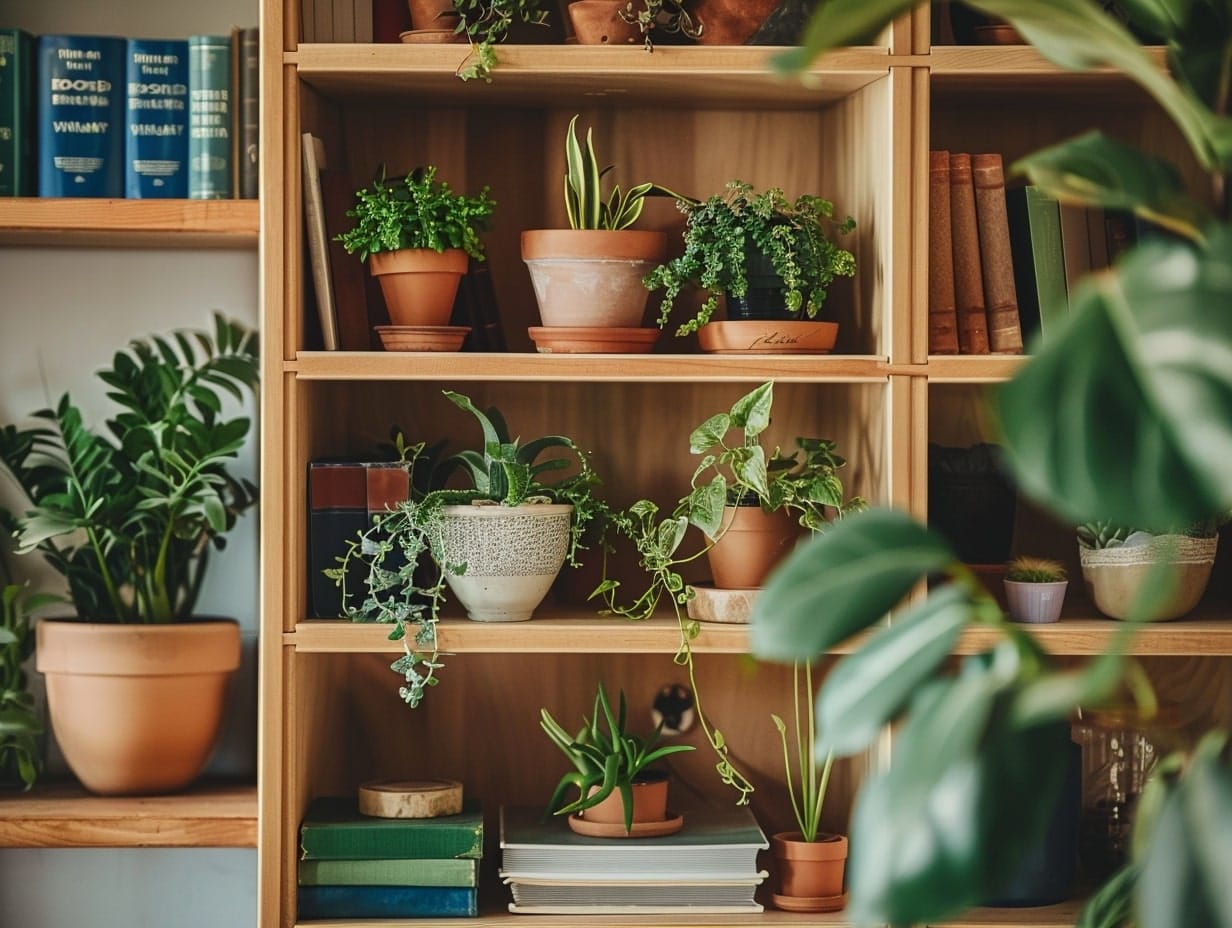
This approach is especially suitable for those who have limited floor space but still want to enjoy a variety of plants indoors. You can mix and match different types of plants such as small ferns, trailing ivies, vibrant succulents, and aromatic herbs to create a diverse and lively garden.
When setting up your plant bookshelf, consider the light requirements of each plant to ensure they are placed in a position to thrive — those needing more light should be closer to the top if the light source is above, or on a shelf that receives adequate ambient light.
Add a Small Indoor Citrus or Palm Tree
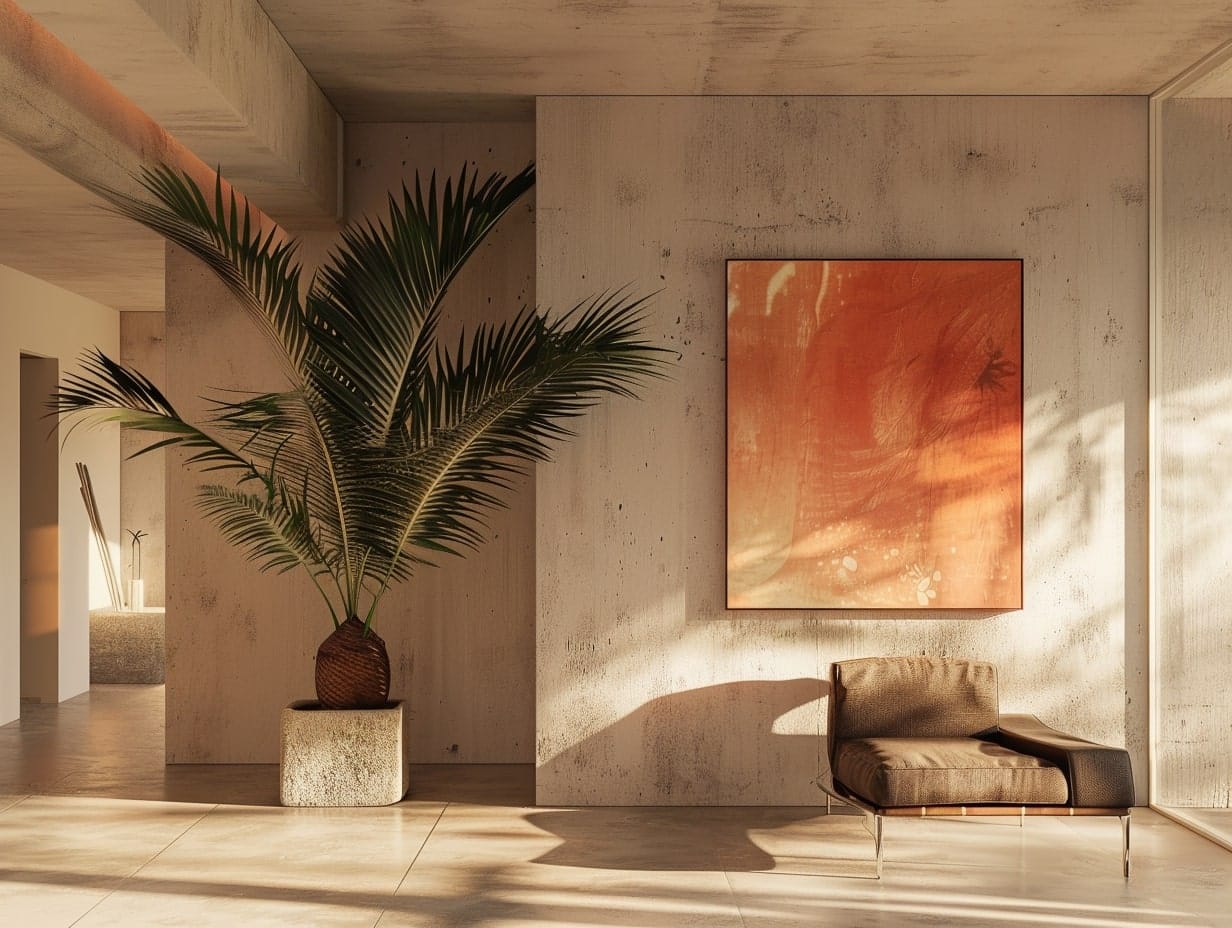
Citrus trees, such as dwarf lemon or lime varieties, are particularly appealing because they offer fragrant blossoms and the potential for fruit. Palm trees, like the parlor palm or kentia palm, are excellent for creating a lush, green backdrop.
When choosing a location for your citrus or palm tree, ensure it receives ample indirect sunlight — southern or western exposures work best for citrus, while palms can tolerate somewhat lower light conditions.
Incorporate a Small Succulent Arrangement on Your Coffee Table
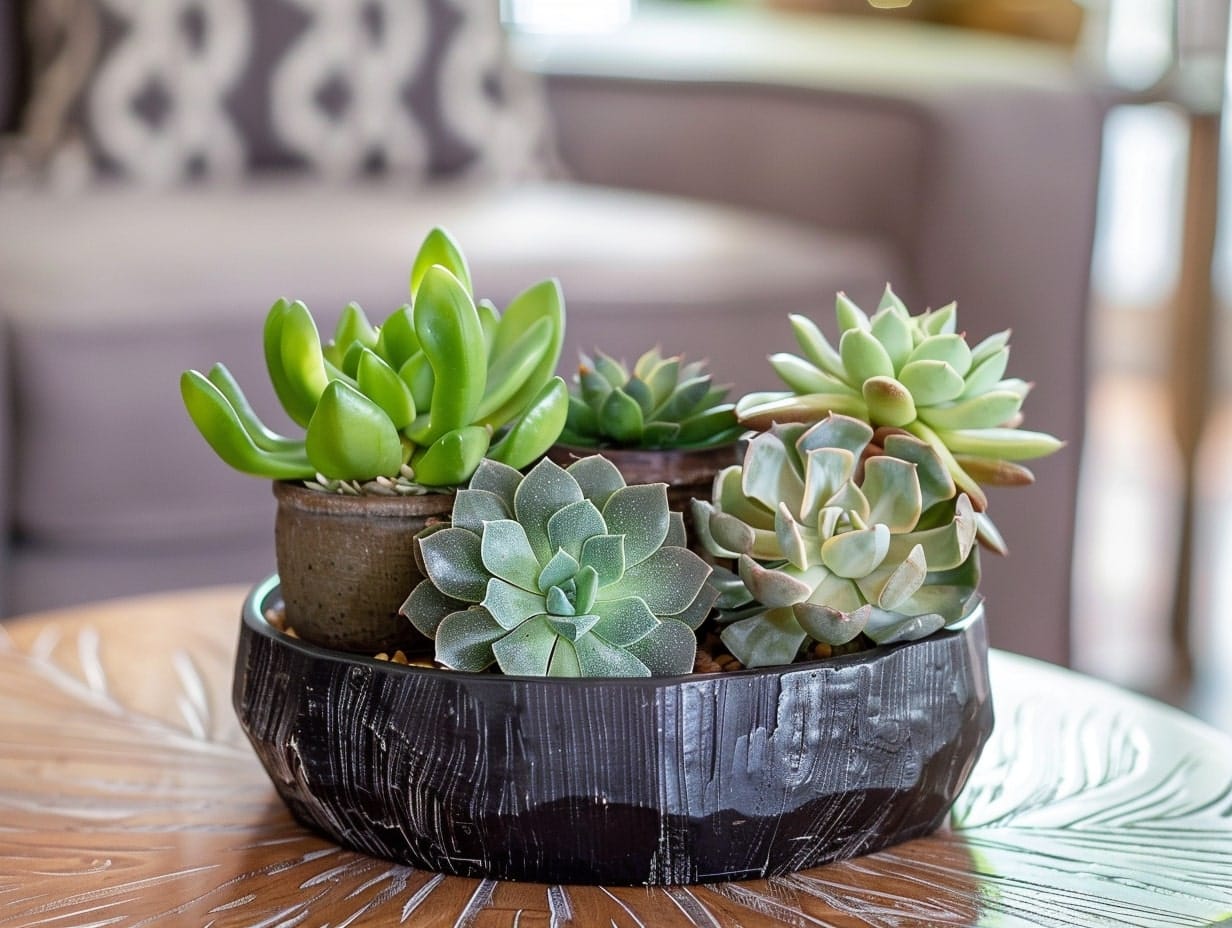
Succulents are particularly well-suited for coffee tables due to their compact size and low maintenance needs.
To start, select a shallow, wide container that complements your coffee table's design, such as a ceramic dish, a rustic wood box, or a modern glass terrarium. Fill the container with a well-draining soil mix specifically designed for succulents.
Arrange the succulents by varying heights, textures, and colors to create depth and visual interest. For instance, a tall, spiky aloe can be balanced with round, plump echeverias and trailing string-of-pearls. Place the arrangement in a spot on the table where it will receive adequate light but avoid direct sunlight, which can scorch the leaves.
Use Humidity-Loving Plants in Your Bathroom

Suitable choices for a bathroom include ferns like the Boston fern or bird’s nest fern, which flourish in moist conditions. Orchids are another attractive option, as they thrive in high humidity and can bloom beautifully with minimal light.
Plants like the peace lily or philodendron also do well, with the added benefit of purifying the air.
To incorporate these plants, consider the available space. Small bathrooms benefit from hanging plants or small potted plants on shelves or the edge of the sink. If you have more space, a larger potted plant can be placed on the floor or a bathroom counter.
Arrange Plants on a Step Ladder for a Rustic Look
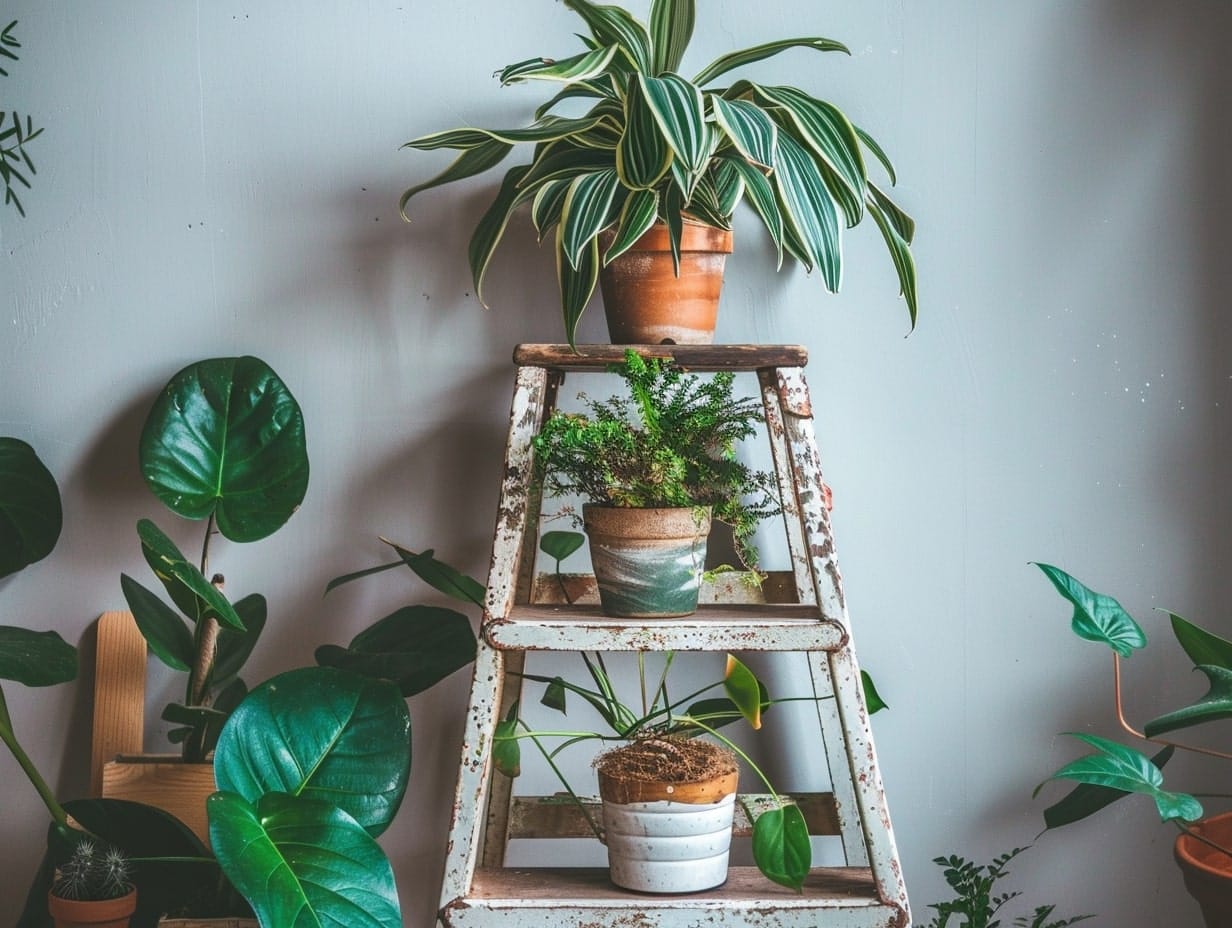
This idea works well for both indoor and outdoor spaces, offering a tiered display that adds height and visual interest to any area. A wooden step ladder is ideal for achieving a rustic look, but metal ones can also be used for a more industrial vibe.
Choose a variety of plants that vary in height, color, and texture. Place larger pots on the lower steps and smaller ones as you go up, ensuring that each plant has enough room to grow and can be easily seen. Cascading plants like pothos or string of pearls look particularly appealing draping down from higher steps.
This setup not only efficiently uses vertical space but also allows you to create a mini garden in areas where ground space is limited.
Keep Small Potted Plants on Your Home Desk
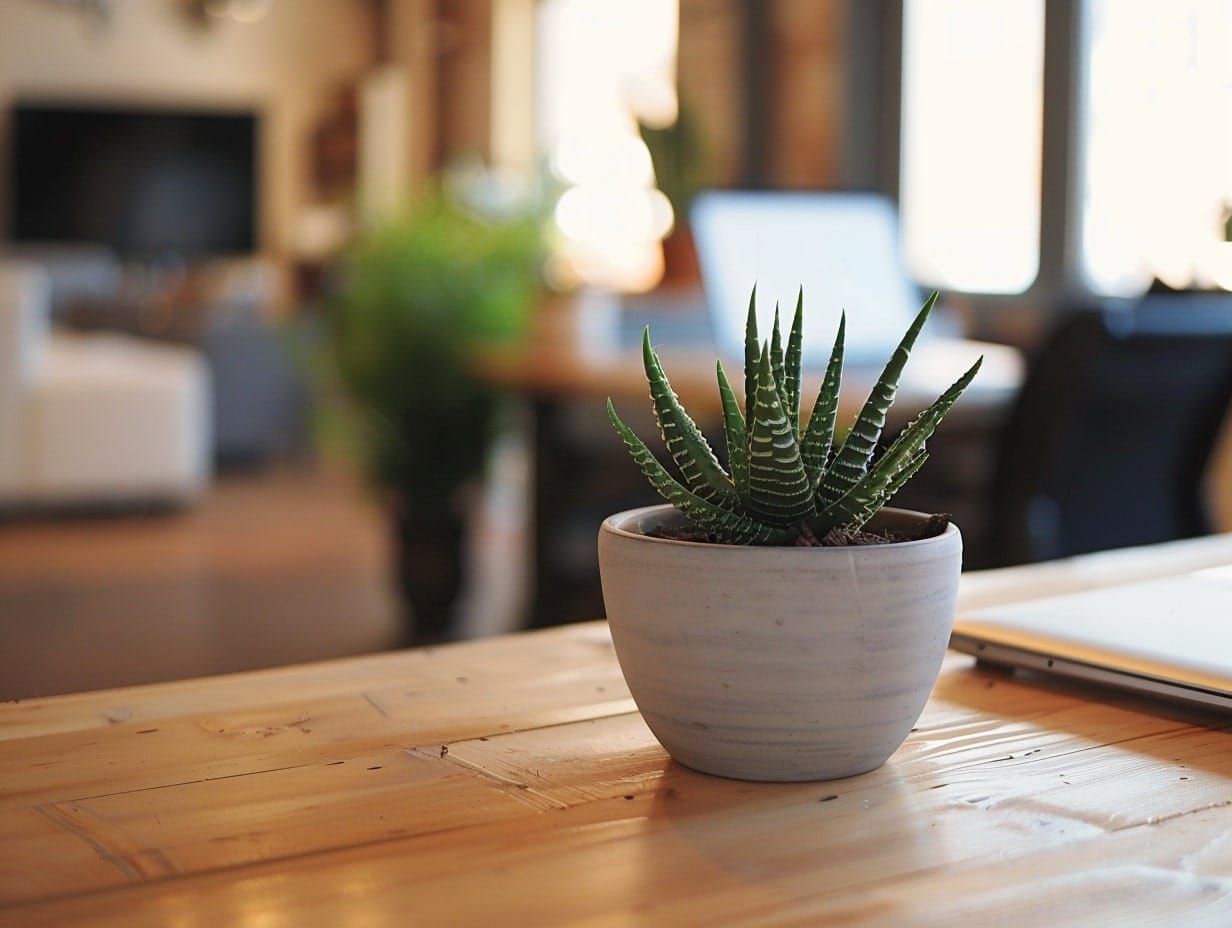
Choose plants that thrive in indoor environments and require minimal sunlight, such as succulents, cacti, or air plants. These plants are particularly low-maintenance, needing only occasional watering, making them perfect for busy workspaces.
Other great options include the peace lily, which can flourish under fluorescent lights, or a small snake plant, known for its air-purifying qualities and ability to thrive on neglect.
When arranging plants on your desk, consider using decorative pots that match your office decor or colorful containers that add a pop of color.
Place Planters at Your Bedside
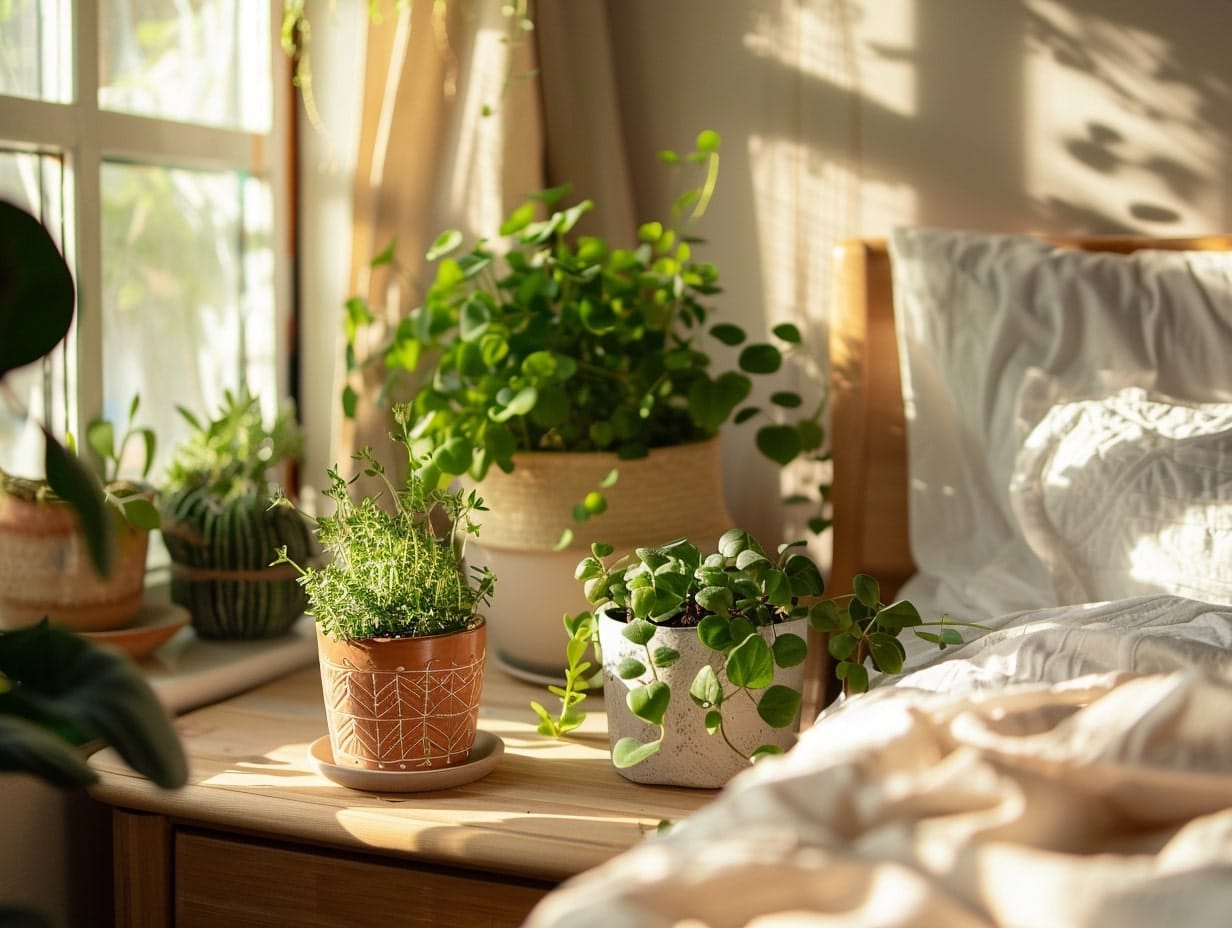
When selecting plants for bedside placement, consider those that are beneficial for sleep and require low light. These include lavender, which emits a soothing scent that can help induce sleep, or snake plants and peace lilies, known for their ability to improve indoor air quality by filtering out toxins.
Choose planters that complement your bedroom decor to maintain a cohesive look. Smaller plants are preferable, as they fit neatly on nightstands without taking up too much space. If your bedside table is small, consider a single, impactful plant or a group of tiny succulents.
Utilize Balcony Space With Hanging Planters
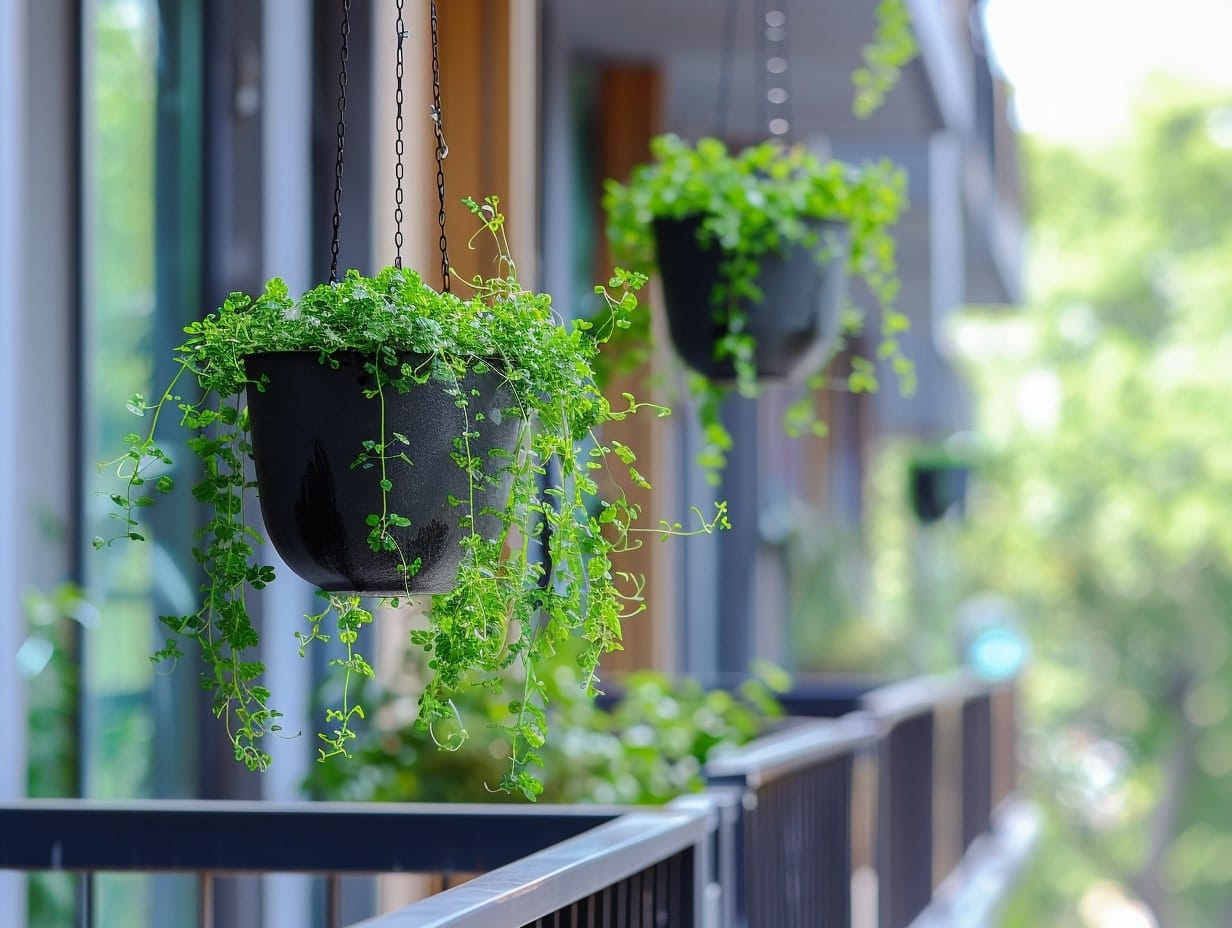
Hanging planters add vertical interest and allow you to grow a variety of plants, from flowers to herbs, without cluttering your balcony floor.
Choose durable planters that can withstand the elements, such as those made from metal, resin, or heavy-duty plastic. Consider the weight of the planters when filled with soil and plants to ensure they can be safely supported by your balcony structure.
Choose a mix of trailing and upright plants to create a lush, layered look. Trailing plants like petunias, ivy, or ferns look particularly beautiful cascading down, while upright plants like geraniums or marigolds add color at eye level.
Decorate Your Kitchen Island With Small Potted Plants
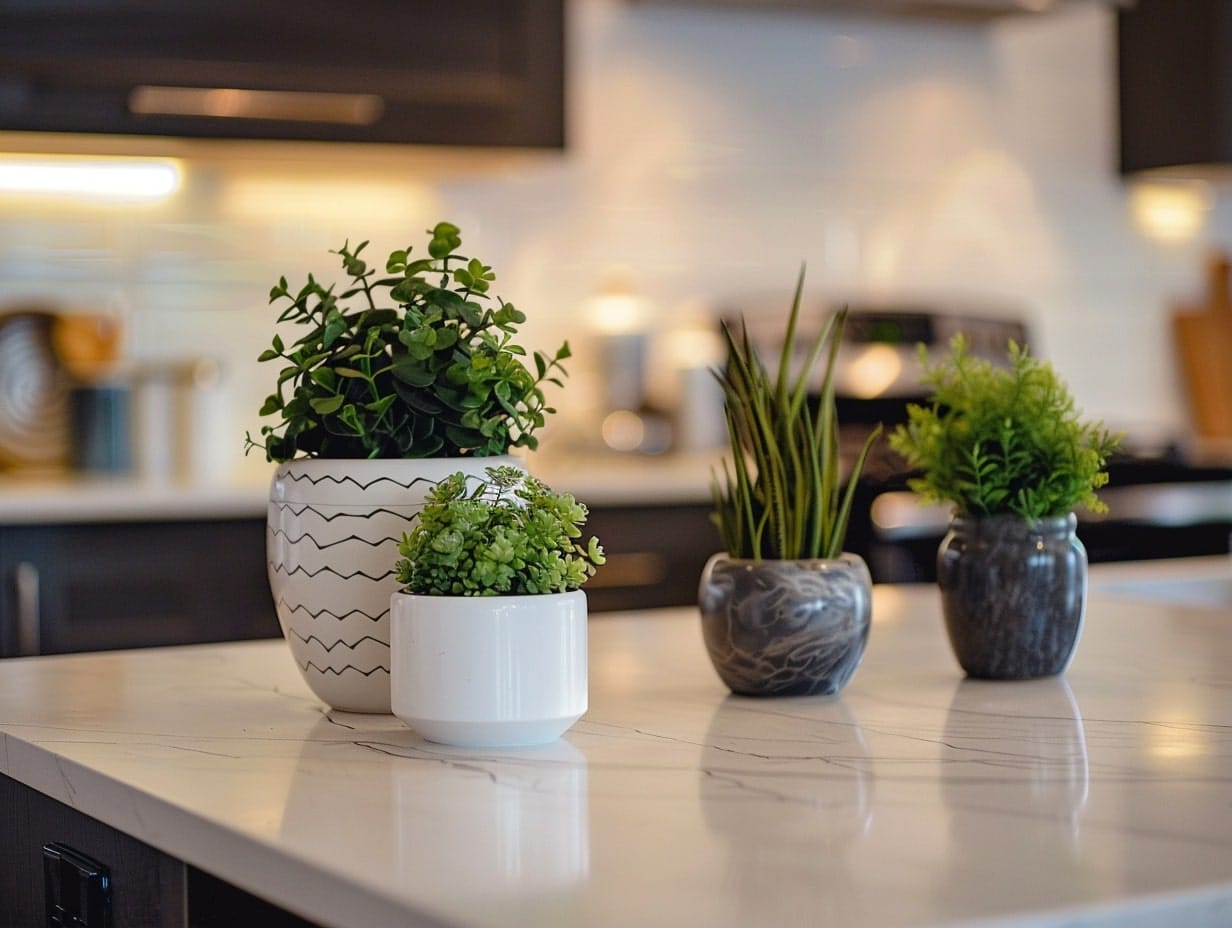
Small plants are ideal for kitchen islands as they don't take up too much space and can be easily moved around when you need extra room for meal preparation or dining.
Choose herbs like basil, mint, rosemary, and thyme, which not only look great but can also be used in your cooking, bringing fresh flavors right to your fingertips. Alternatively, small succulents or air plants can add a decorative touch without requiring much maintenance.
Select pots that complement the style and color scheme of your kitchen. For a modern look, consider minimalist ceramic or metallic pots.
Use a Water Bowl to Display a Floating Lotus or Water Hyacinth
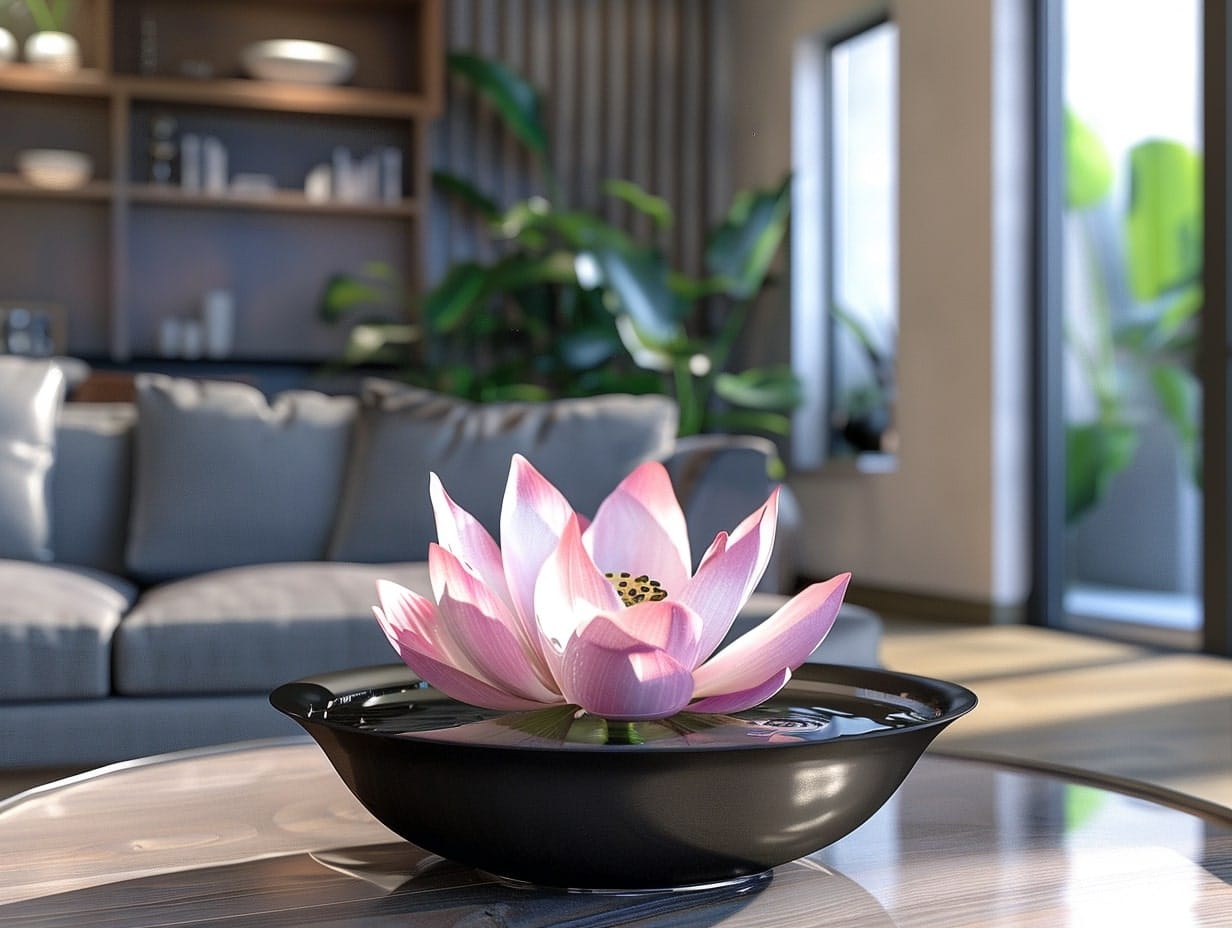
This setup is relatively simple to create and maintain, making it a perfect addition to spaces such as living rooms, patios, or bathrooms, where a touch of tranquility is desired.
To get started, select a broad and shallow bowl, which allows ample surface area for the plants to float and grow. Materials like glass, ceramic, or metal work well and can complement your existing decor.
Ensure the bowl is waterproof and durable. For the plants, both lotus and water hyacinth are known for their striking flowers and floating foliage. Fill the bowl with distilled or dechlorinated water to support the health of the plants, and place it in a location that receives several hours of direct sunlight daily, as both plants thrive in bright light.
Create a Fairy Garden in a Large Pot
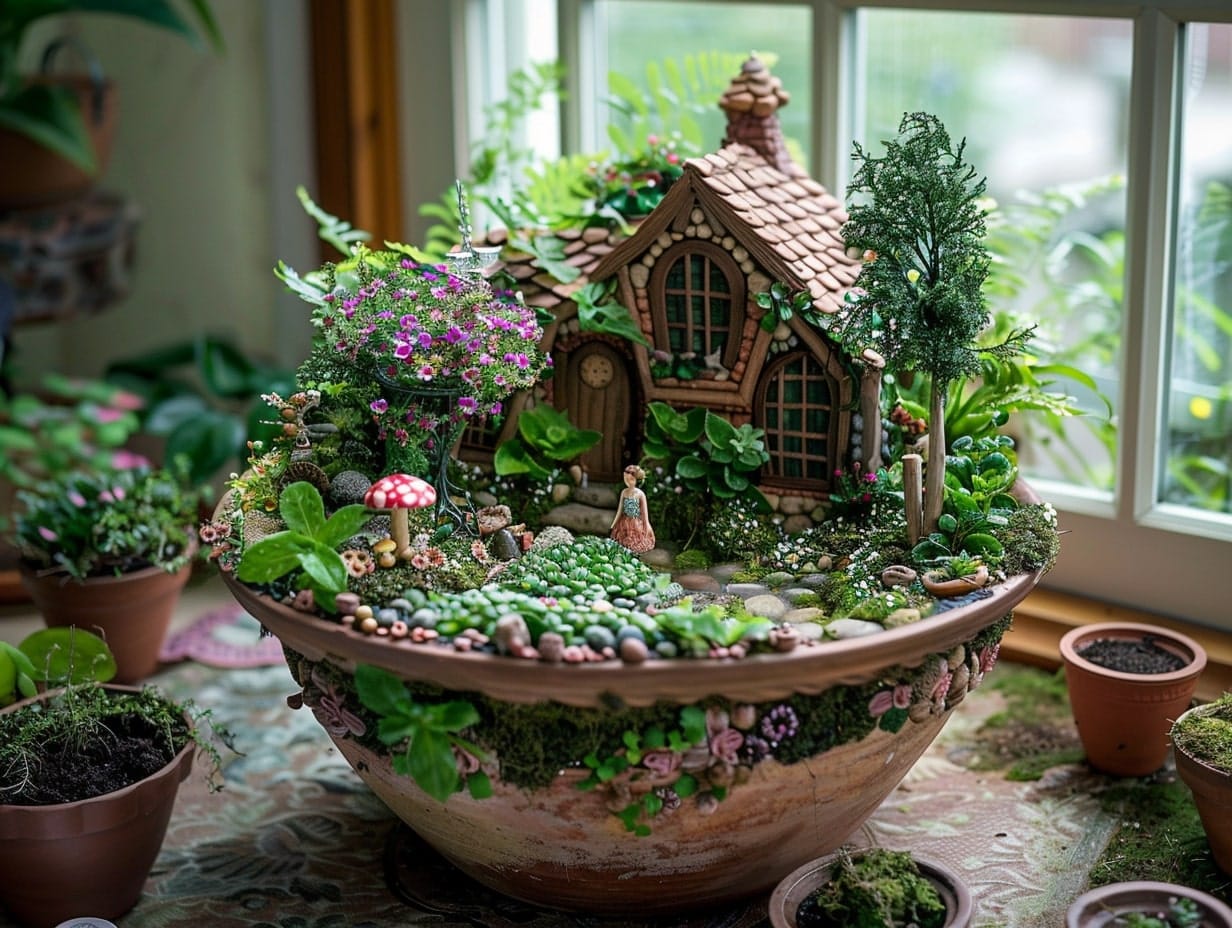
To start, select a large pot with a wide opening to provide ample space for your fairy garden elements. Ensure the pot has drainage holes to keep soil from becoming waterlogged. Fill the pot with a high-quality potting mix suited for the types of plants you plan to include.
Choose small, low-growing plants that resemble a miniaturized landscape. Some great choices are mosses for ground cover, small-leaved ivies or ferns for foliage, and miniature succulents or flowering plants like African violets for color. Arrange these plants to create different "zones" in your garden, such as a wooded area, a meadow, or a tiny village.
Next, add miniature accessories to bring your fairy garden to life. These can include small houses, pathways made of pebbles, tiny benches, and even diminutive figures of fairies and animals.
Use Oversized Planters for a Dramatic Effect
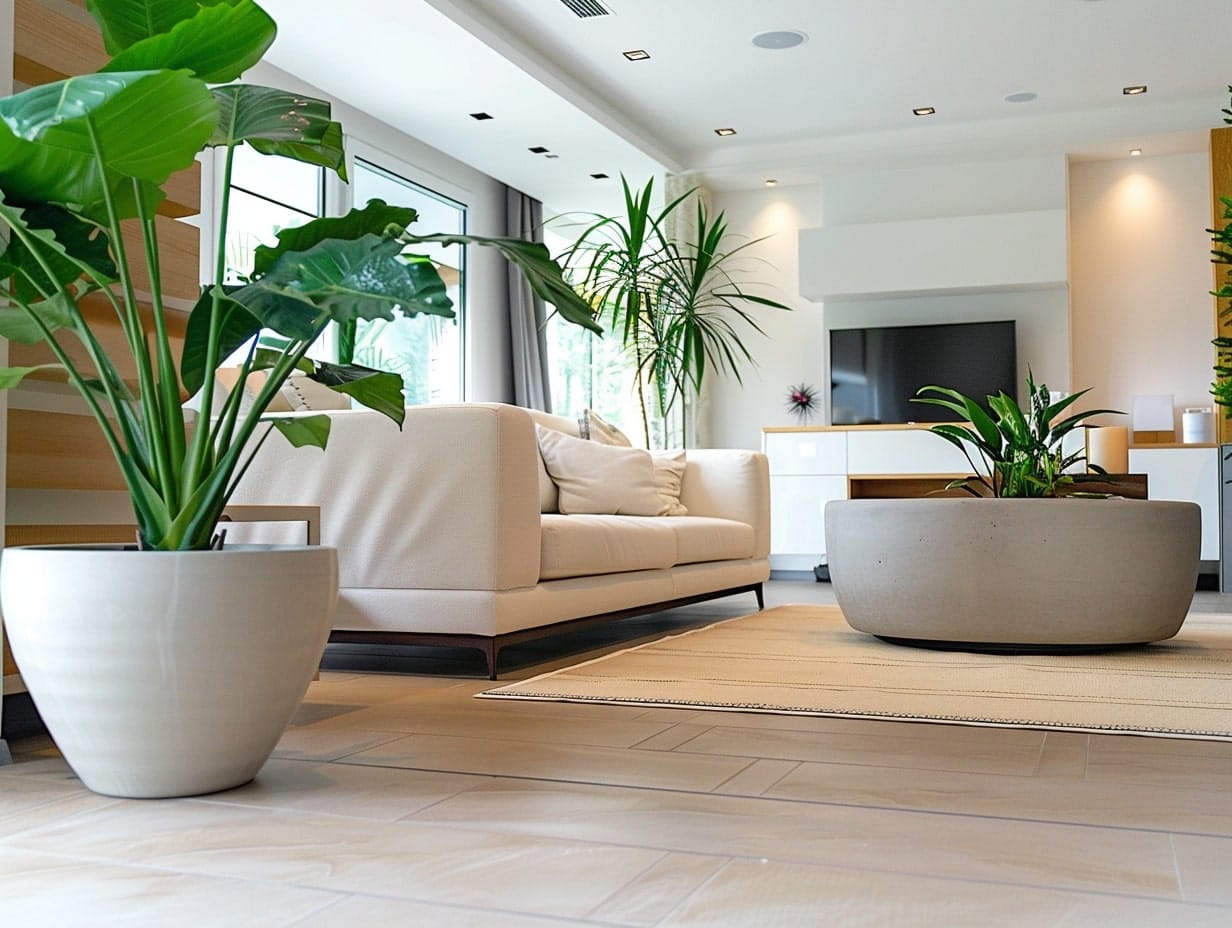
These large planters can serve as focal points in a garden, on a patio, or within large indoor spaces like foyers or open-plan living areas.
When selecting oversized planters, consider the scale and aesthetics of your space. Materials like stone, concrete, or large ceramic pots make substantial statements and can harmonize with modern, traditional, or rustic decor.
Plant choice is crucial for oversized planters. Choose plants that match the scale of the pots — tall grasses, large shrubs, or even small trees like olive or palm trees are great choices.
Place Ferns in Your Foyer
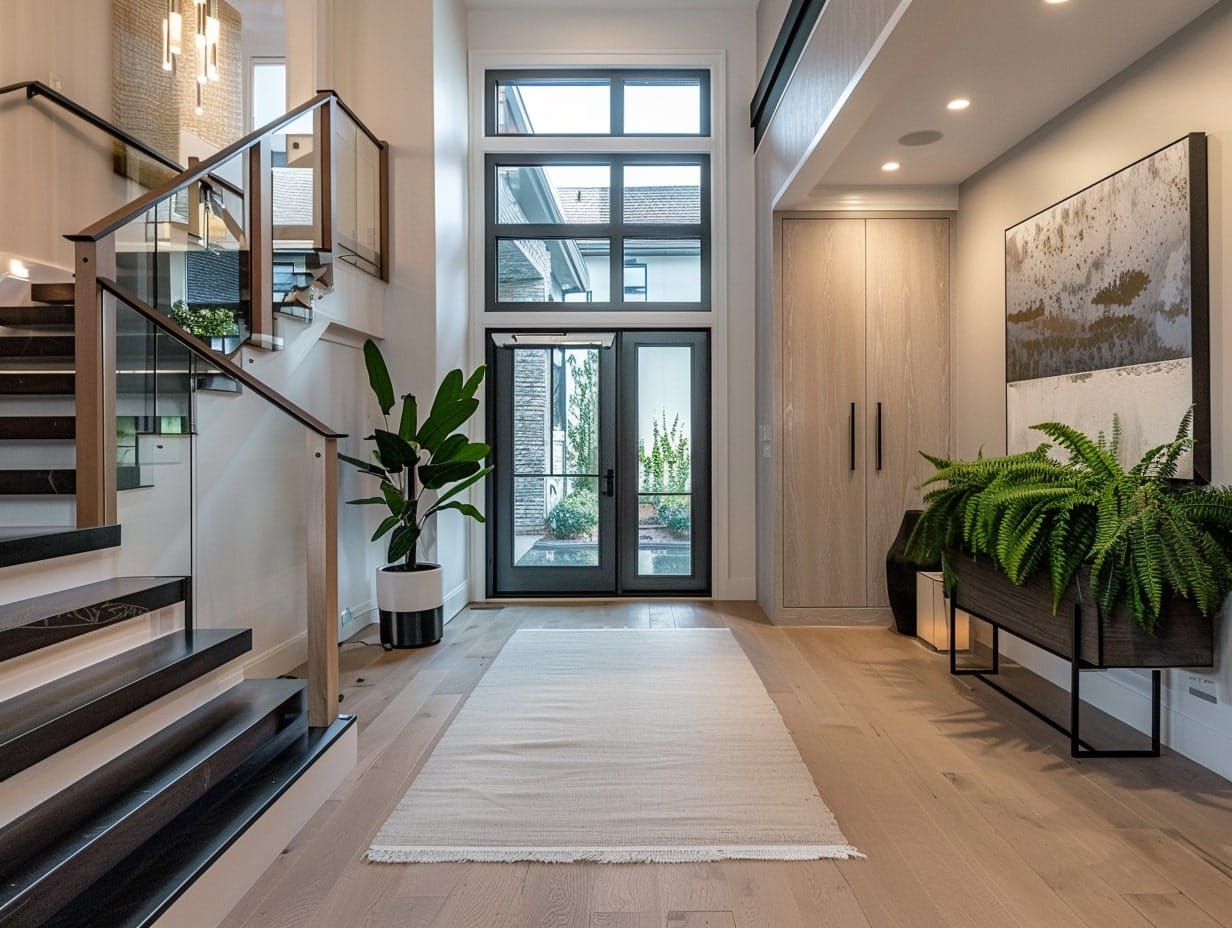
Ferns are particularly suited for foyers due to their preference for indirect light and their ability to thrive in the fluctuating temperatures that entryways often experience.
When selecting ferns for your foyer, consider varieties that can handle lower light conditions if your entryway doesn't receive a lot of natural sunlight. Boston ferns, maidenhair ferns, and bird's nest ferns are all excellent choices due to their aesthetic appeal and adaptability.
To integrate ferns into your foyer, use decorative pots that match or complement your home's interior design. You can place larger ferns on the floor in corners or beside furniture. Smaller ferns can be set on tabletops or in hanging planters if ceiling height allows.
Drape Ivy Along Fireplace Mantels
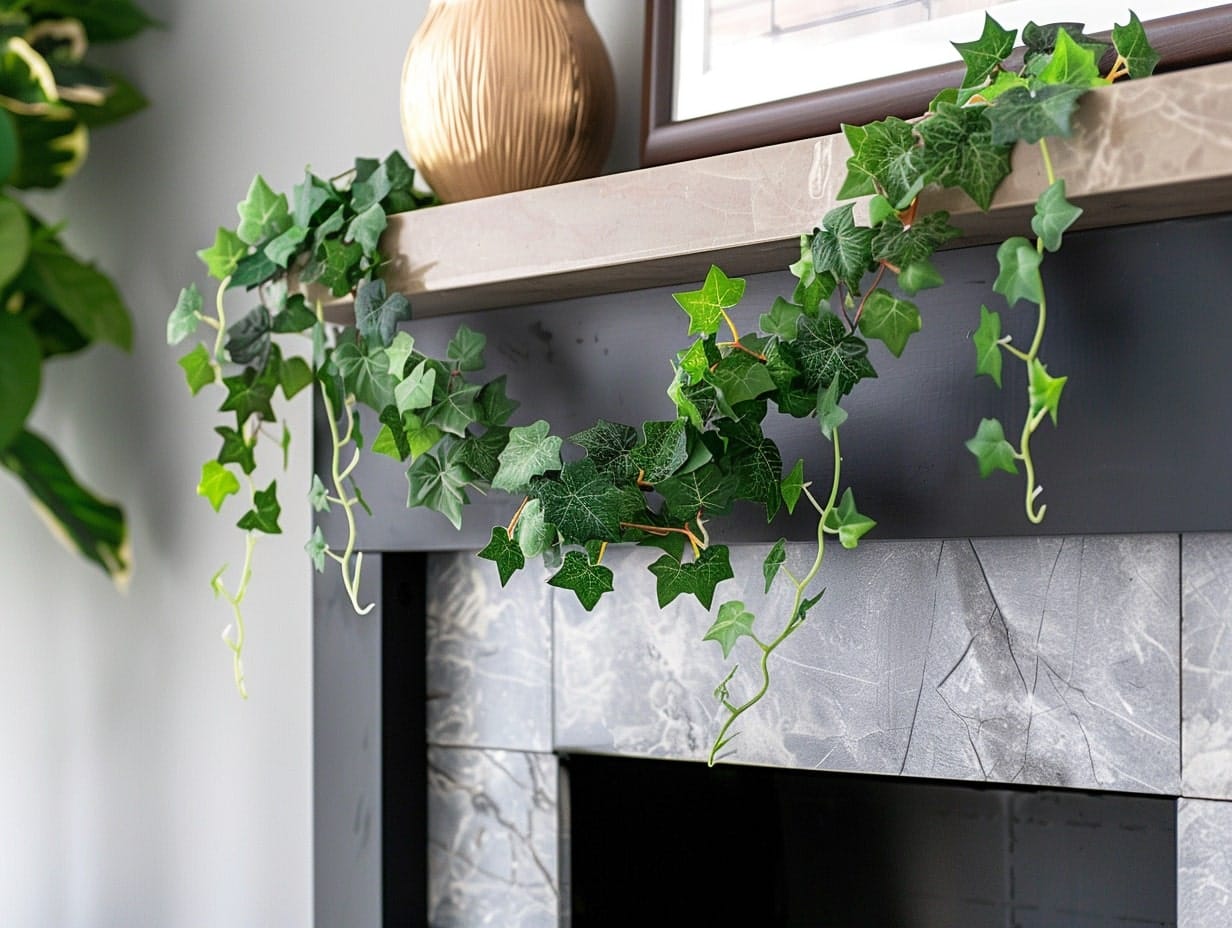
Ivy brings a classic and sometimes whimsical feel, softening the hard surfaces of a mantel and introducing an element of the outdoors inside.
When selecting ivy for your fireplace mantel, consider varieties like English ivy or Algerian ivy, which are known for their lush, trailing growth and adaptability to indoor environments. These types of ivy can thrive with moderate light and some indirect sunlight, making them suitable for placement near or on mantels.
Brighten Indoor Spaces With Colorful Plants and Flowers
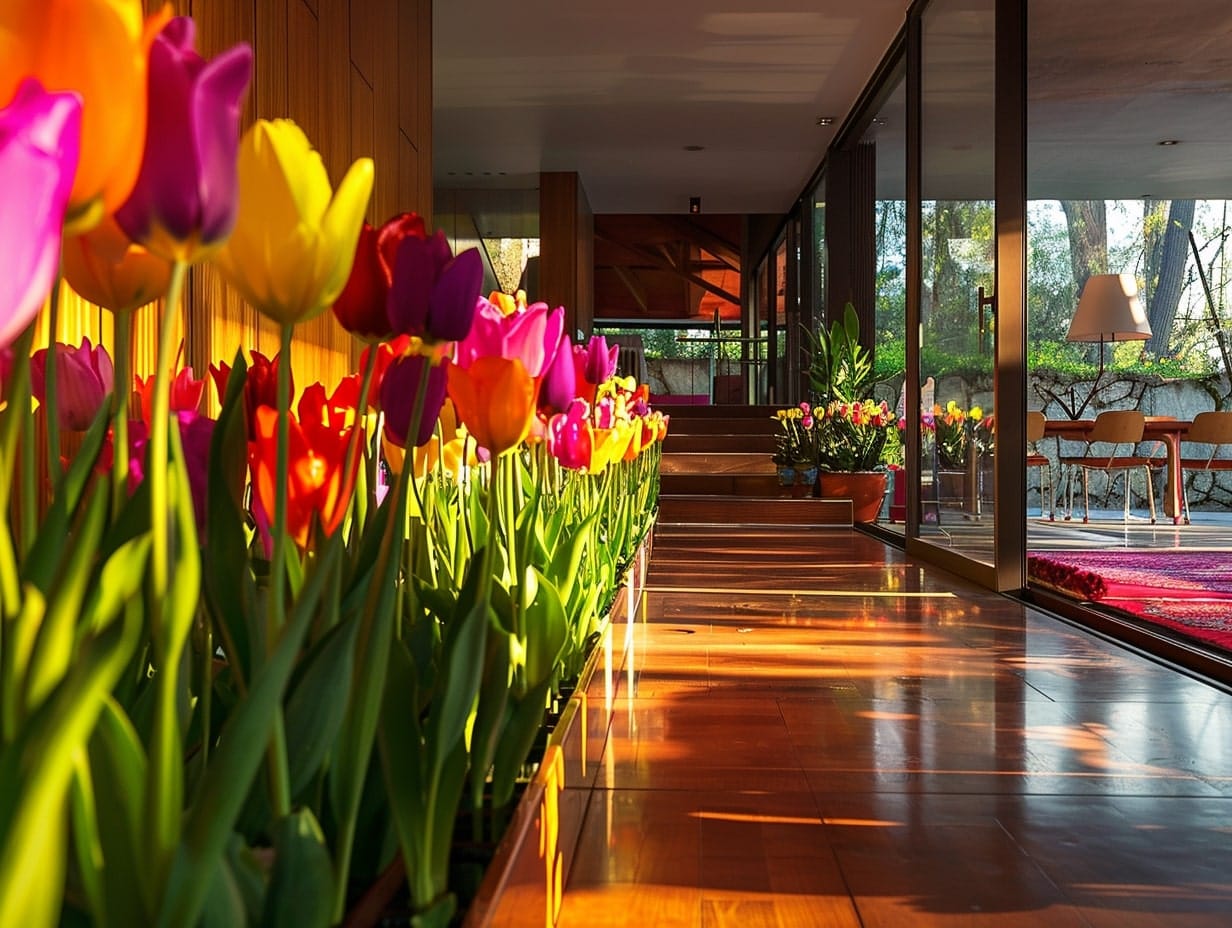
Choose vibrant flowering plants like begonias, African violets, or orchids, which offer a variety of hues and textures. These plants not only inject color but also improve air quality and can boost your mood.
Position them in areas that receive sufficient light to keep the flowers blooming. Consider complementing these with colorful foliage plants like crotons or coleus, which maintain their vivid colors year-round.
Arranging these plants in decorative pots that match your interior design can seamlessly integrate them into your living space, creating a cheerful and inviting atmosphere.
Fill the Space Under Stairs With Plants
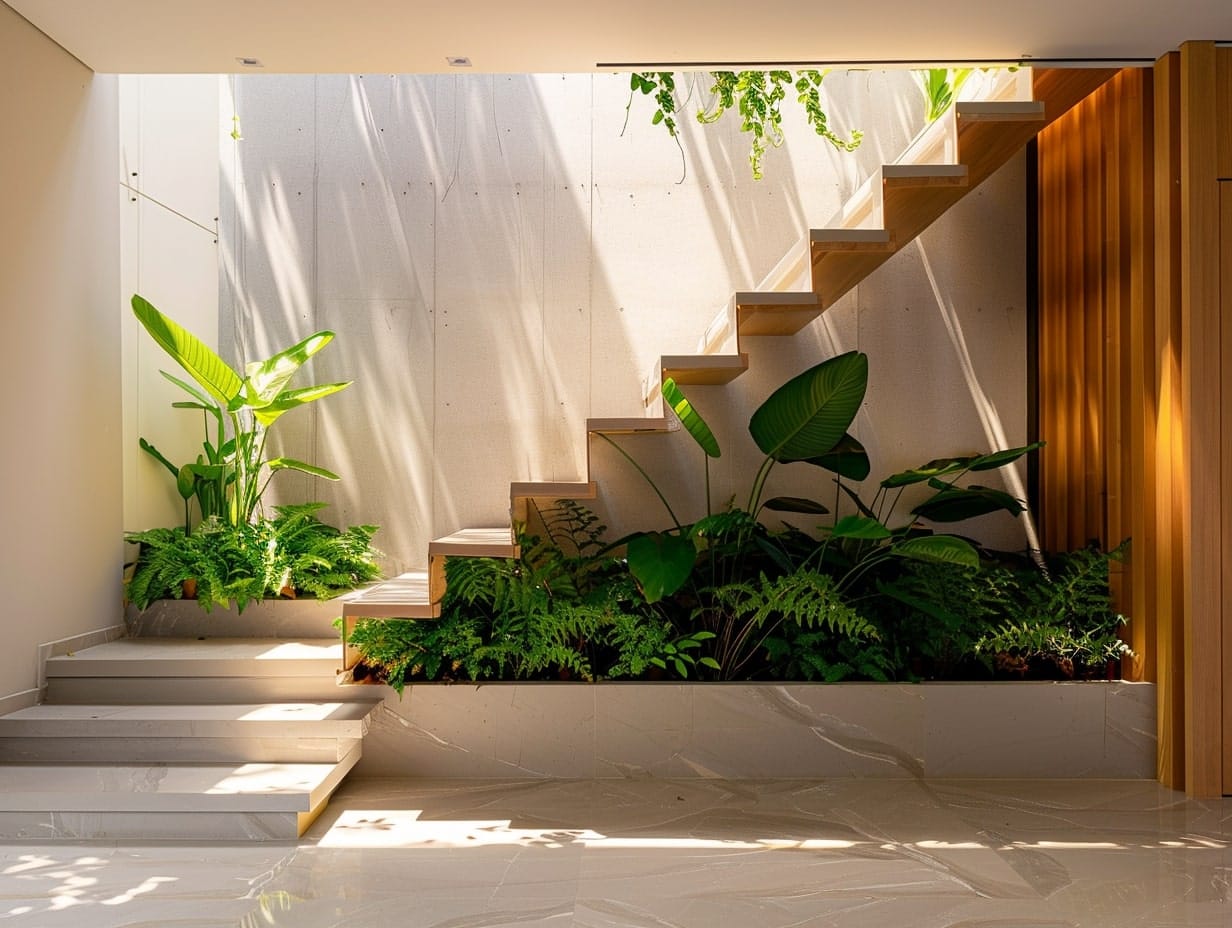
This spot typically benefits from being out of the main traffic flow while still being part of your living environment, making it ideal for an indoor garden nook.
Choose a variety of plants that can thrive in the specific light conditions available under your stairs. For dimly lit spaces, opt for shade-tolerant plants like sansevieria (snake plant), pothos, or philodendron.
For a more dramatic effect, mix heights and leaf textures. Tall plants can draw the eye upward, while shorter, bushy plants fill the lower space, creating a tiered look.
Integrate Aquatic Plants Into Your Fish Task

Choose plants like Java fern, Anubias, or water wisteria, which are easy to maintain and thrive underwater. These plants help oxygenate the water, remove toxins, and provide hiding spots and natural habitats for fish, reducing stress and promoting healthier lives.
Anchor the plants properly in the substrate to ensure stability and prevent them from floating away.
Use a Strip of Moss as a Table Runner
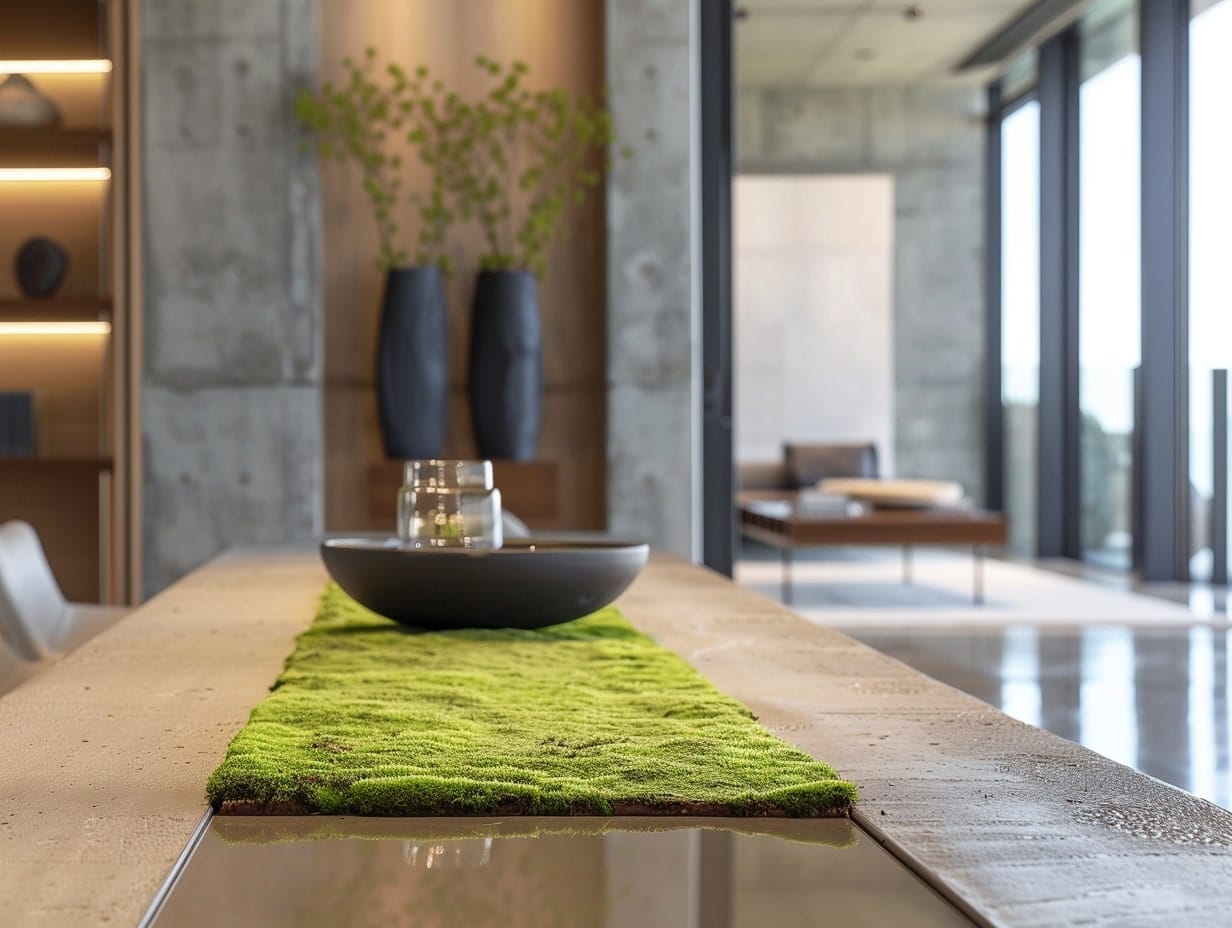
To create your moss table runner, choose a type of moss that is lush and vibrant, such as sheet moss, which is typically sold in large pieces that can be easily shaped to fit your table. Lay the moss down the center of your table, trimming any excess to achieve the desired width and length.
Enhance the runner by integrating additional natural elements like small succulents, twigs, stones, or candles, creating a centerpiece that draws the eye and sparks conversation.
Display Elegant Orchids on Side Tables

Orchids, with their delicate and exotic blooms, offer a touch of elegance and are often associated with luxury and refined taste.
When choosing orchids, Phalaenopsis orchids are a popular choice due to their long-lasting flowers and relatively easy care requirements. These orchids come in a variety of colors, including vibrant pinks, subtle whites, and striking purples, allowing you to match or contrast with your room's color scheme.
Place your orchid in a decorative pot that complements the room’s style.
Hang Japanese Moss Plants From the Ceilings
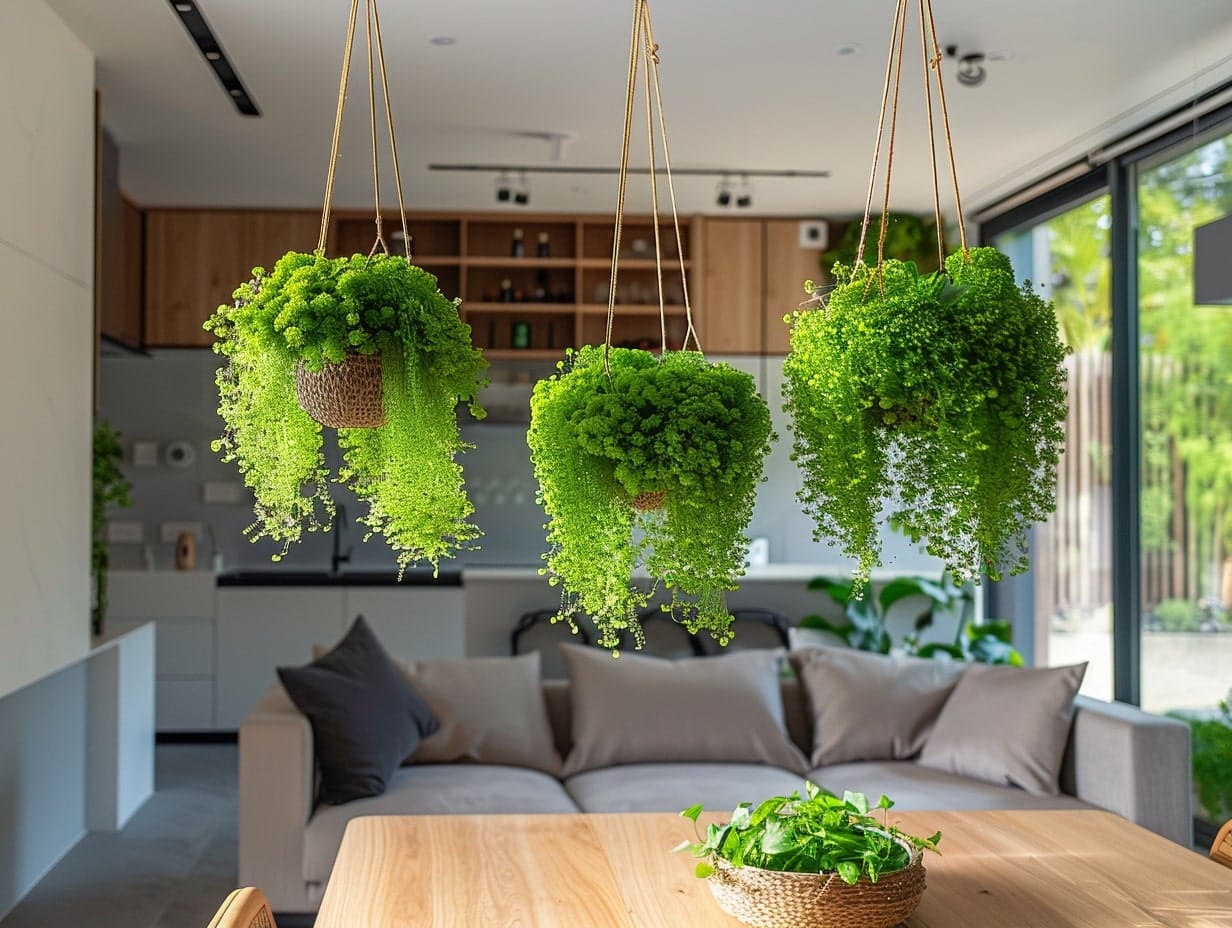
Kokedama is a Japanese gardening technique that involves wrapping a plant’s root ball in moss and binding it with string, creating a unique and natural display piece.
To hang Kokedama, you’ll need strong and aesthetically pleasing cords or chains. Choose a spot in your home that receives indirect sunlight, as direct sunlight can dry out the moss too quickly. The ceiling over a window or in a corner that catches some light is ideal.
Create Artistic Decor Pieces Using Plants
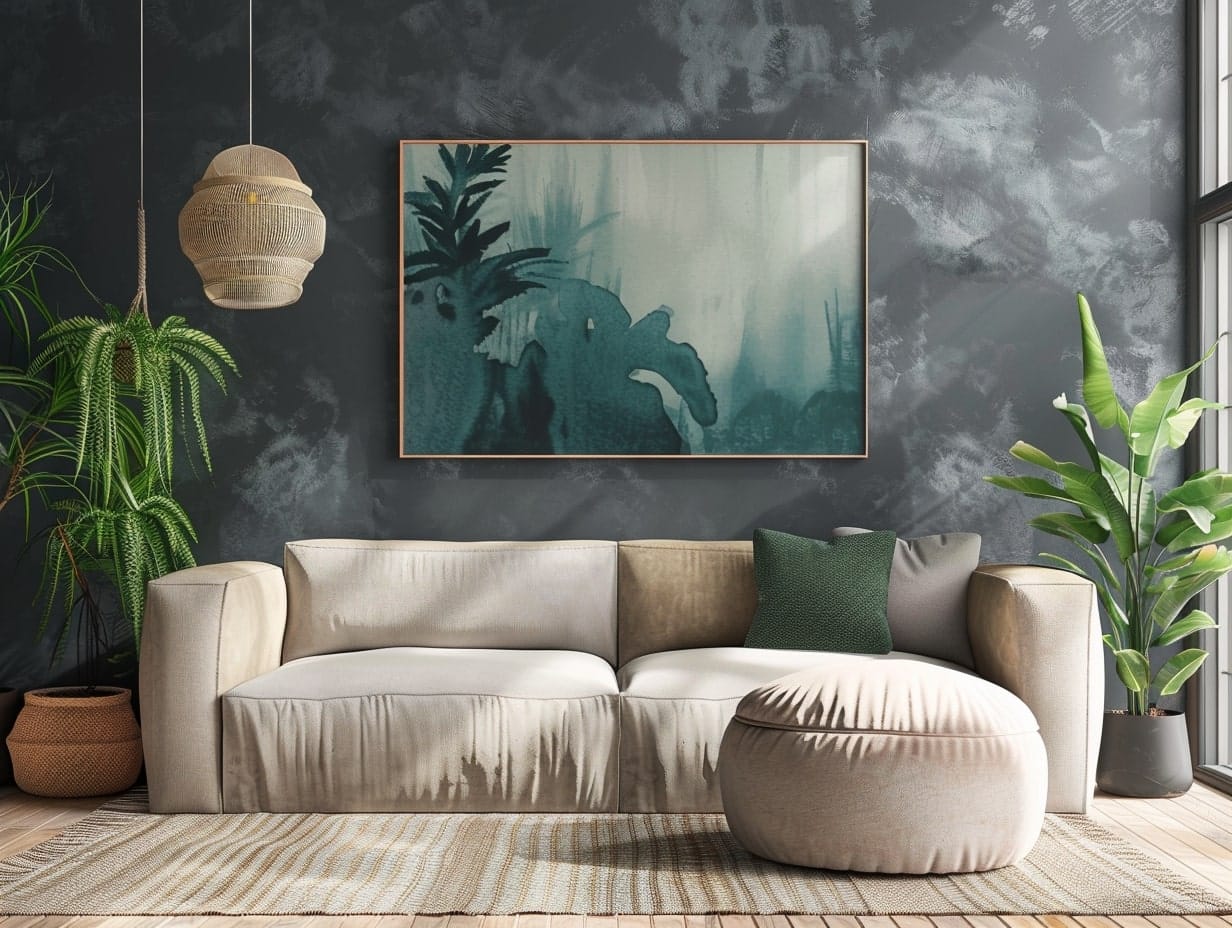
One captivating idea is to craft framed plant art. This involves arranging moss, small ferns, or air plants within a shadow box to create a living piece of wall art. Such displays serve not only as unique focal points but also add a natural, textural element to your decor.
Alternatively, you could create plant sculptures by integrating air plants or succulents with wire forms, fashioning shapes like spheres or cubes. These sculptures transform everyday flora into stunning, three-dimensional artwork that captivates and charms any viewer.
Design an Edible Indoor Garden
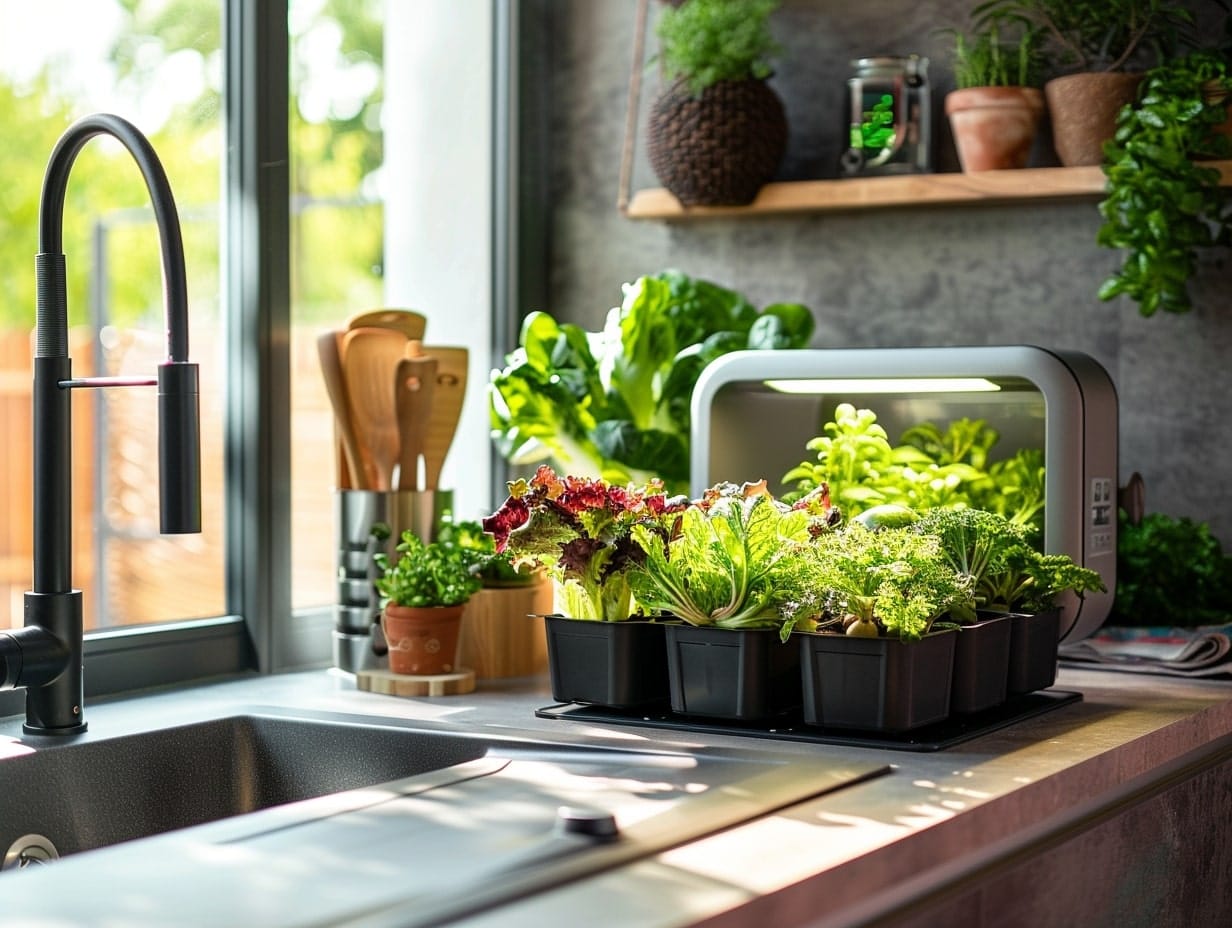
To start, choose a location like a sunny windowsill or use grow lights if natural light is insufficient. Choose containers that fit the space well and ensure they have proper drainage to avoid overwatering.
Start with herbs such as basil, parsley, and mint, which are easy to grow and commonly used in cooking. You can also try growing lettuce, cherry tomatoes, and peppers, which require a bit more space but are still well-suited to indoor gardening.
For something unique, consider adding dwarf fruit varieties like strawberries or small citrus trees, which can thrive indoors with the right care.
Suspend Glass Terrariums With Plants From Different Heights
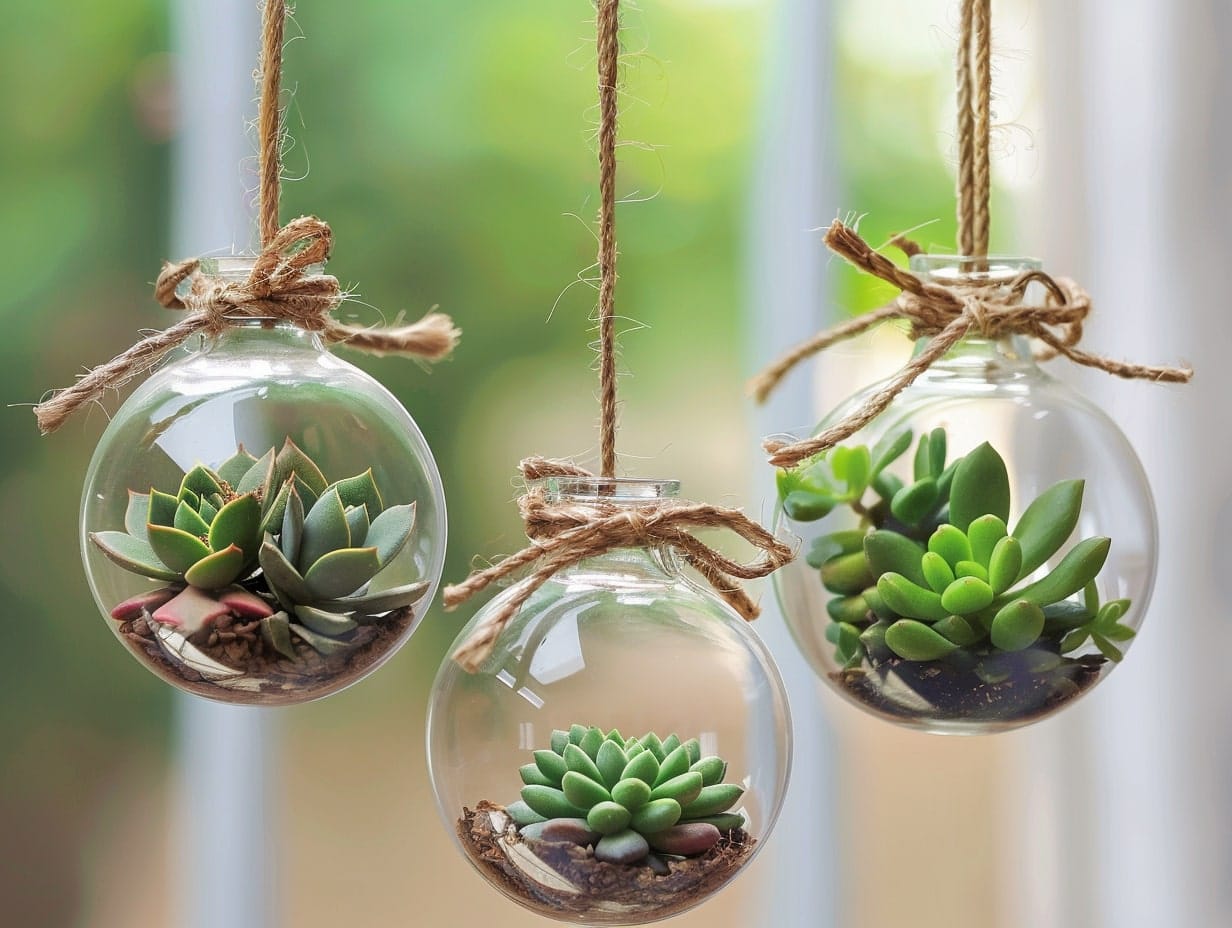
Choose a variety of glass terrariums — some spherical, others geometric—and fill them with a mix of air plants, ferns, succulents, or small foliage plants that thrive in a contained environment with minimal soil. Ensure each terrarium has a few stones for drainage layered beneath the soil to keep the roots healthy.
To hang them, use sturdy fishing line, decorative chains, or colored ropes, adjusting the lengths to create a staggered effect.
Place Shaped Topiaries in Small Pots
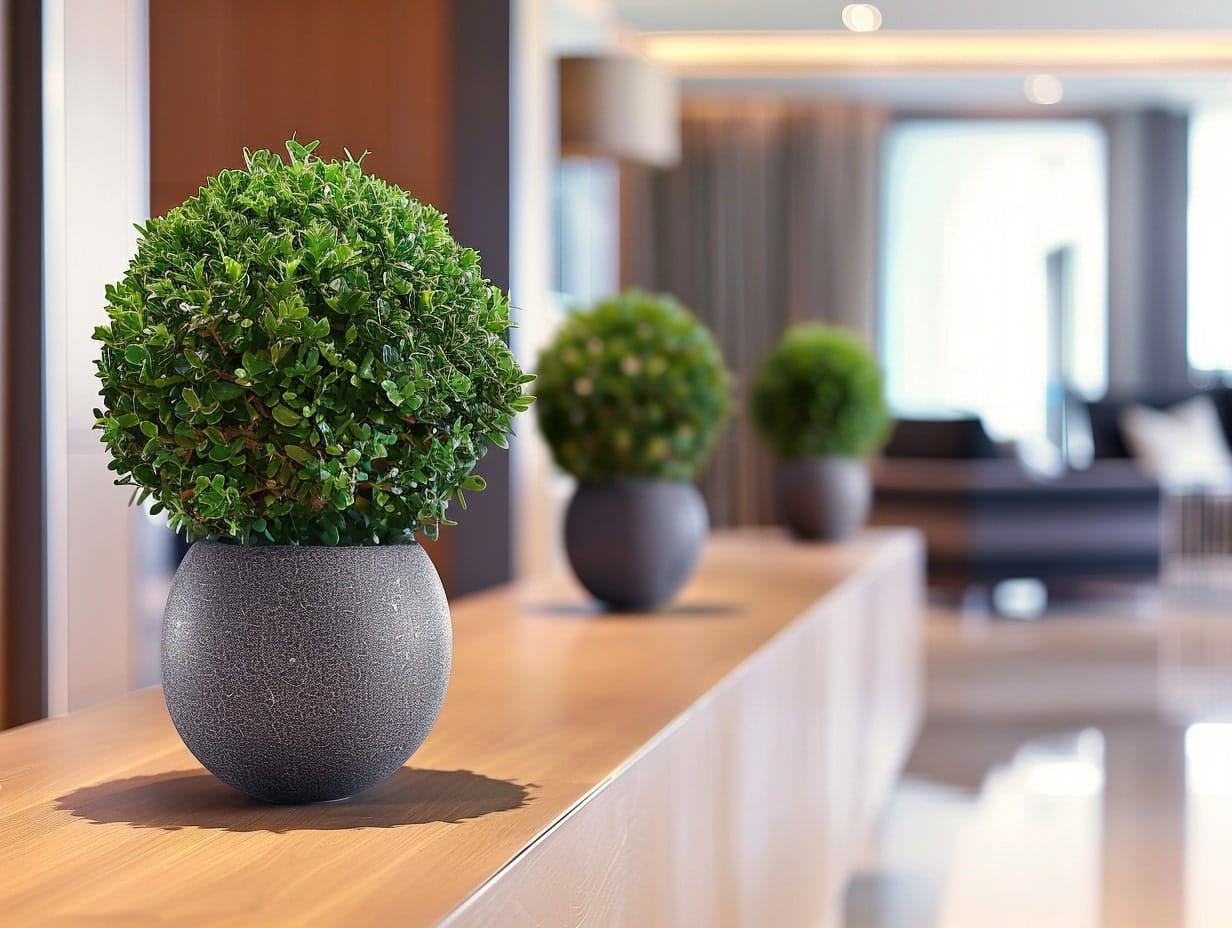
Choose small pots that complement the topiary's form and the style of your space. Whether classical urn shapes for traditional decors or sleek, modern designs for contemporary rooms, the right pot enhances the visual impact of the shaped plant.
Common choices for indoor topiaries include boxwood, ivy, and myrtle, all of which can be meticulously pruned to maintain their shapes. Place these topiaries on mantels, as table centerpieces, or in line on window sills where they can get adequate light.
Install an Indoor Window Box for Flowers
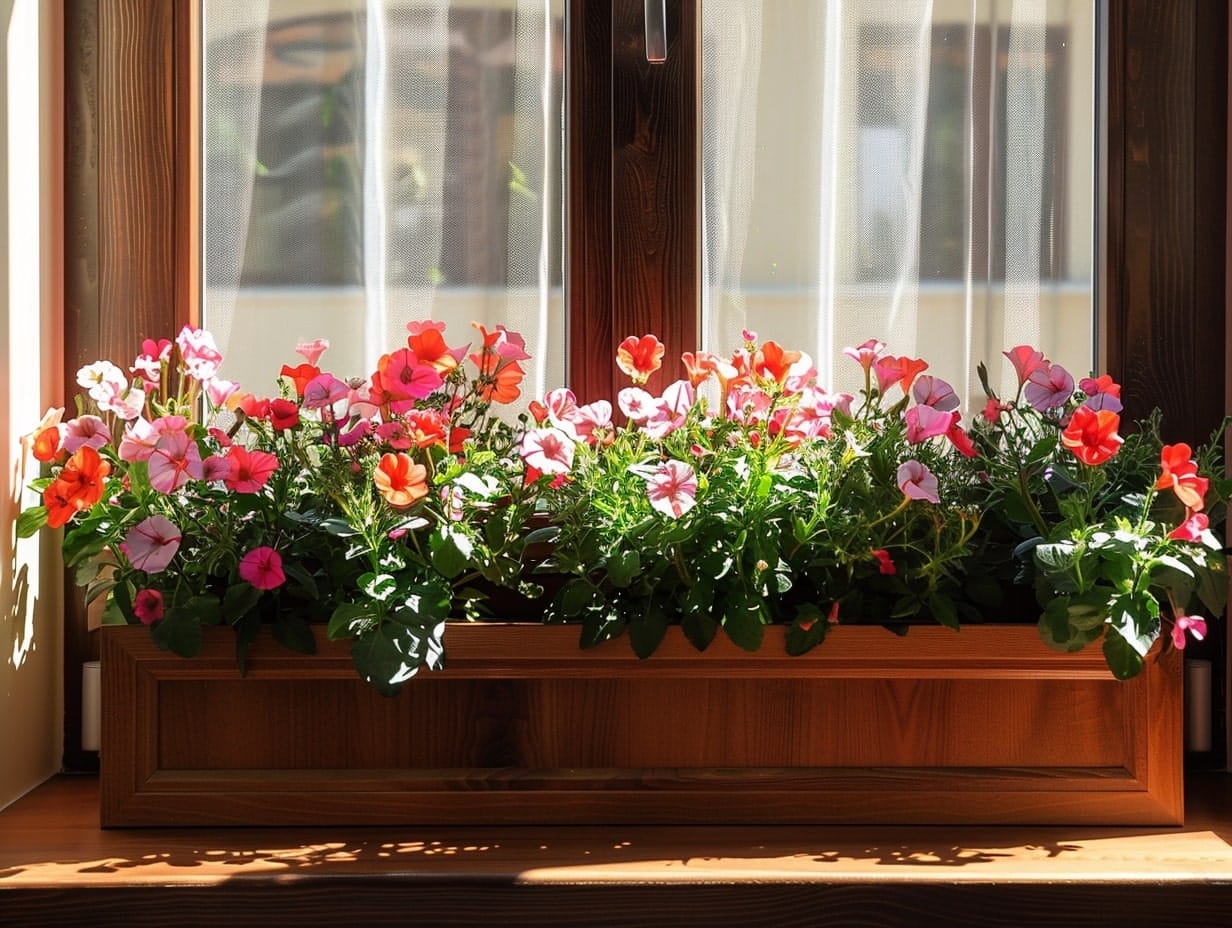
Choose a window box that matches the interior decor and is sturdy enough to hold the soil and plants without sagging. Ensure the box has drainage holes to prevent water accumulation and root rot. Use a high-quality potting mix suitable for indoor plants to fill the box.
Choose flowers that thrive in the light conditions provided by the window. For sunny windows, consider petunias or geraniums; for less sunny locations, impatiens or begonias are great choices. Adding some trailing plants like ivy or sweet potato vine can add an extra dimension of interest.
Create a Chandelier That Incorporates Live Plants
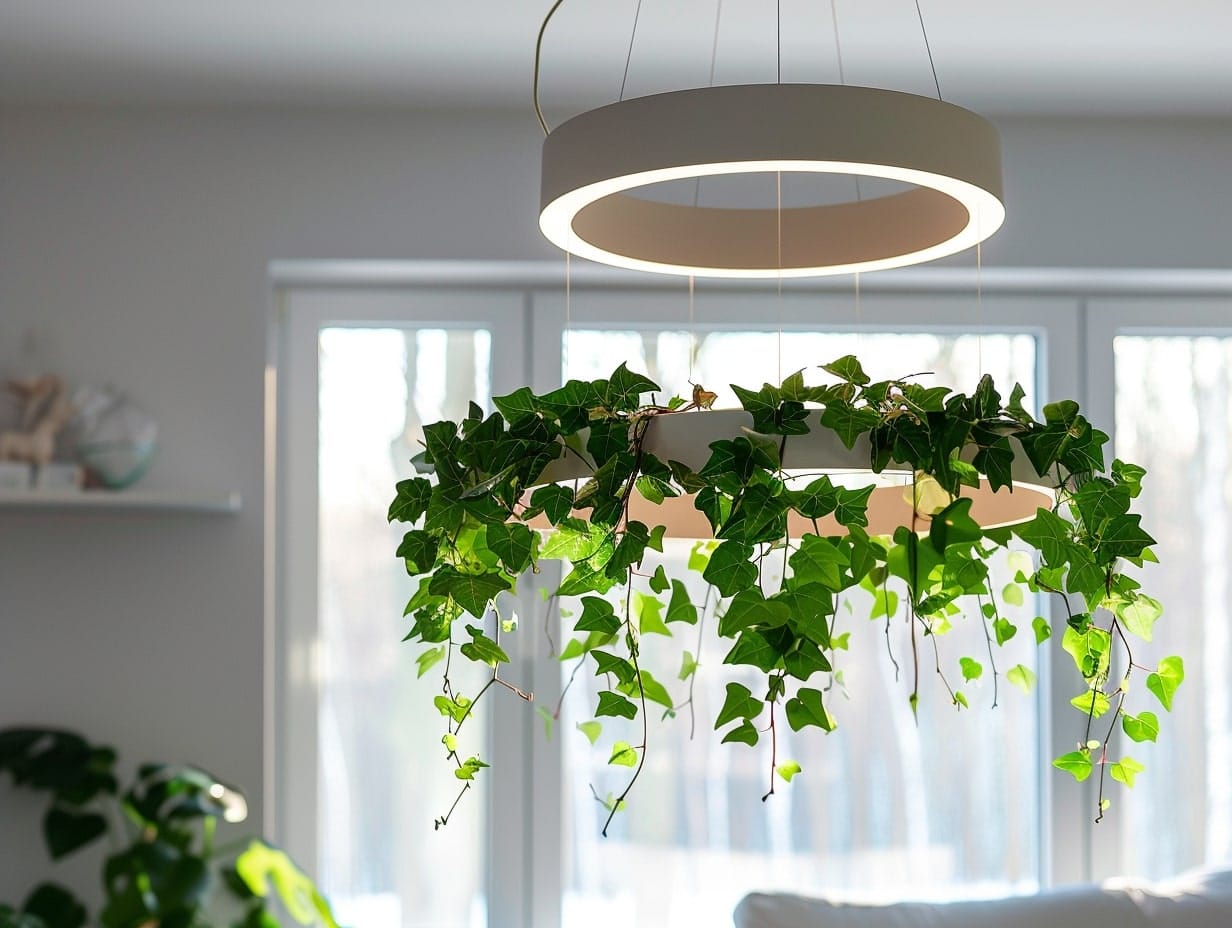
Start by choosing a sturdy chandelier frame with multiple arms or levels, which provides ample space to hang or attach small pots or containers.
Choose lightweight materials such as small plastic pots or moss balls (kokedama) to minimize the overall weight. Succulents, air plants, or small ferns are ideal because they require minimal water and soil, reducing the load and maintenance.
Integrate grow lights into the chandelier design if the room’s natural lighting isn't sufficient for plant growth.
